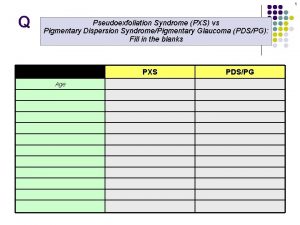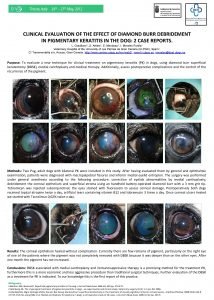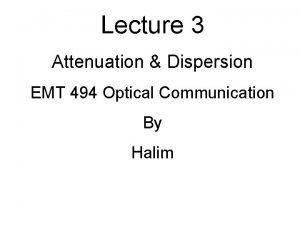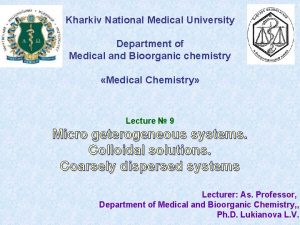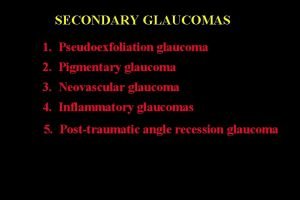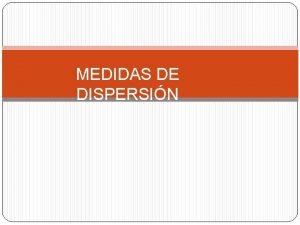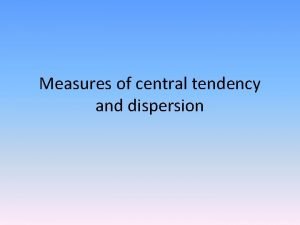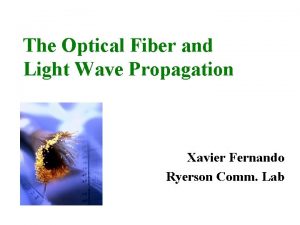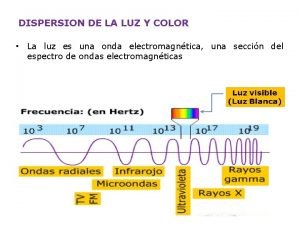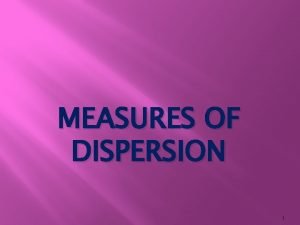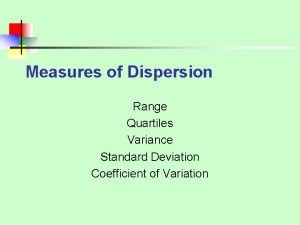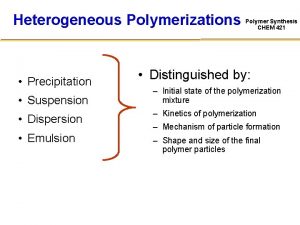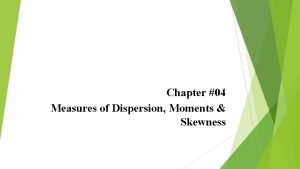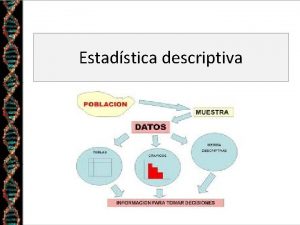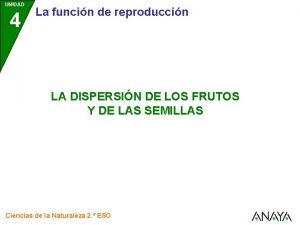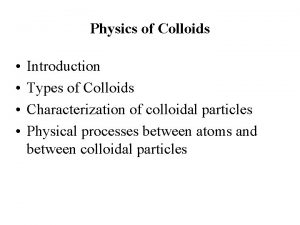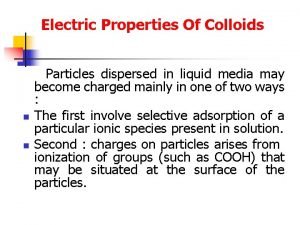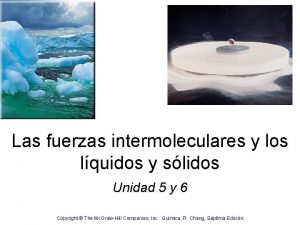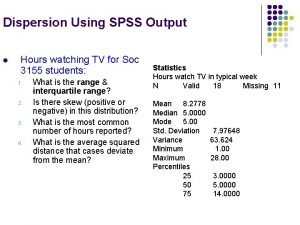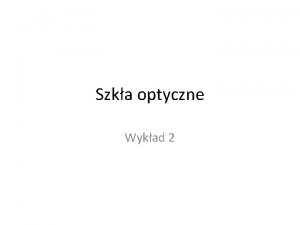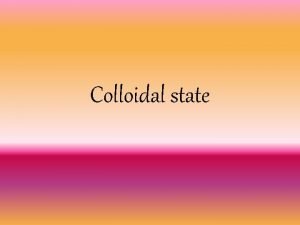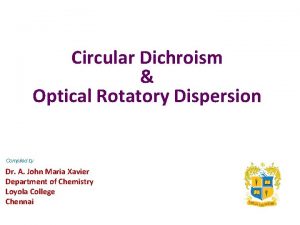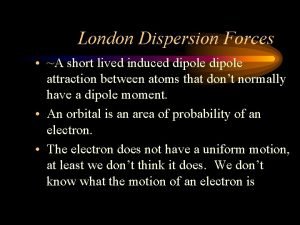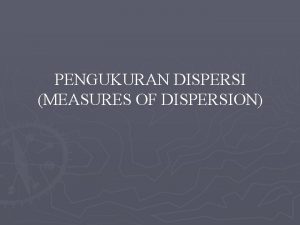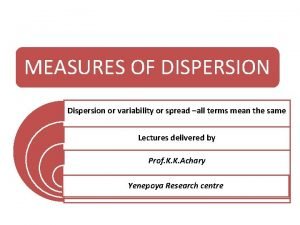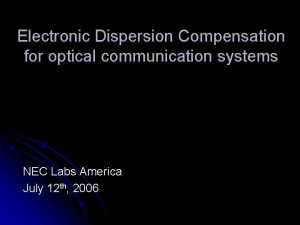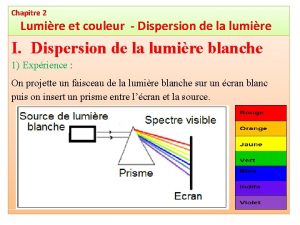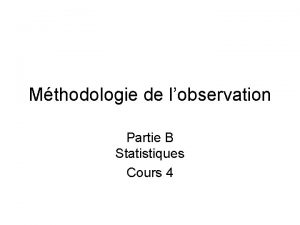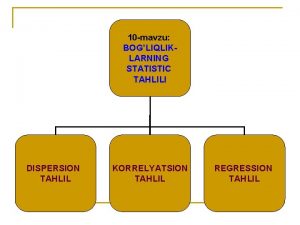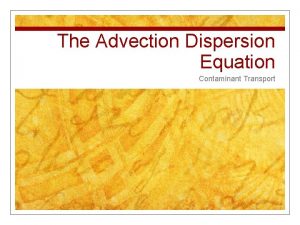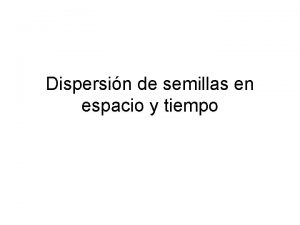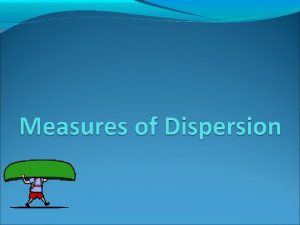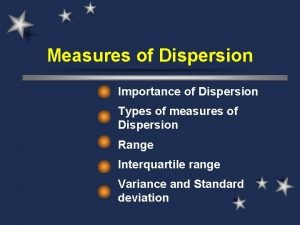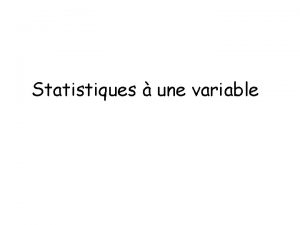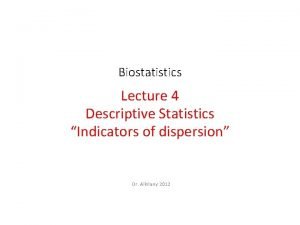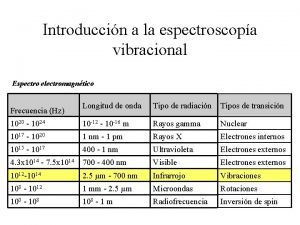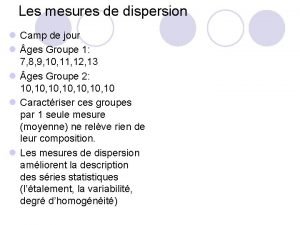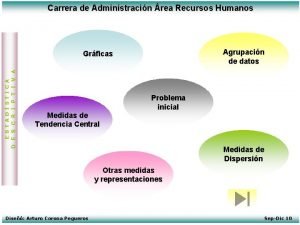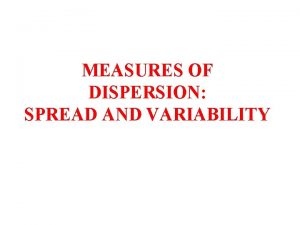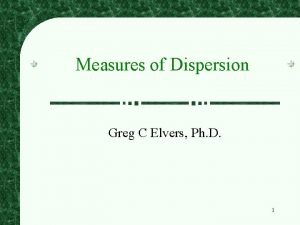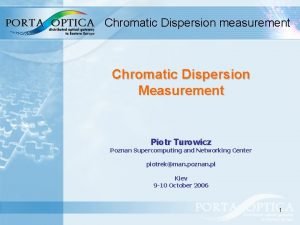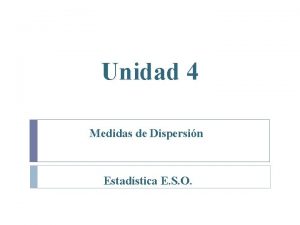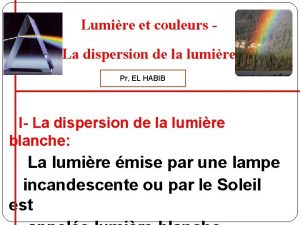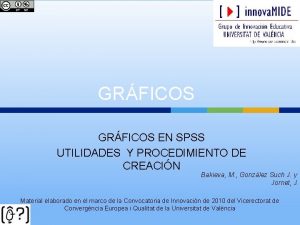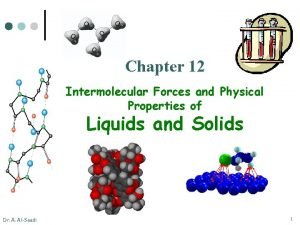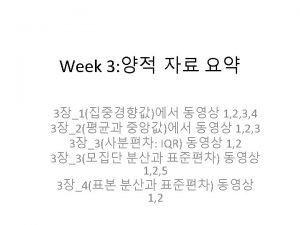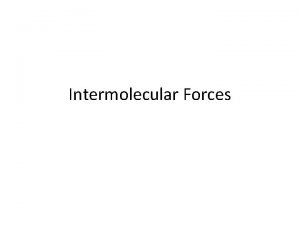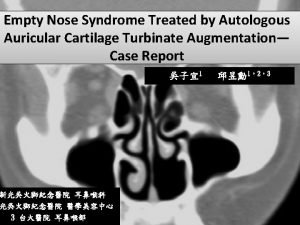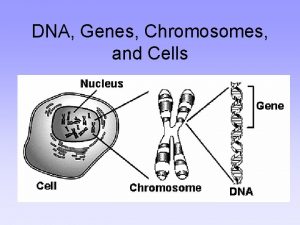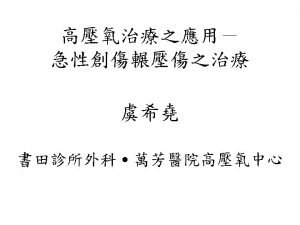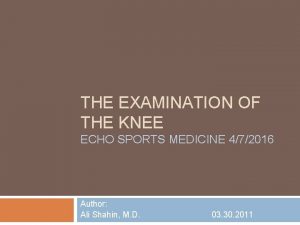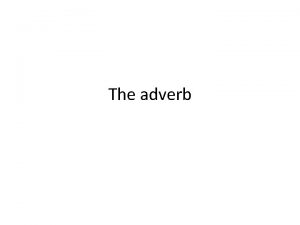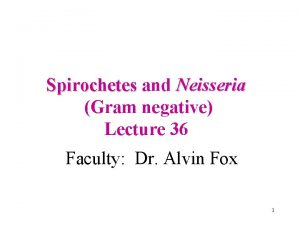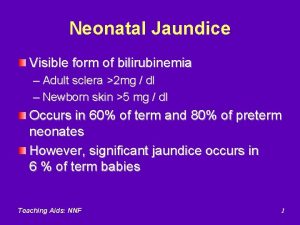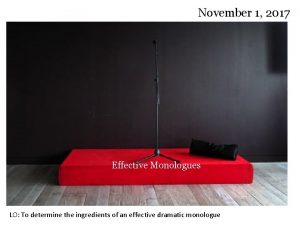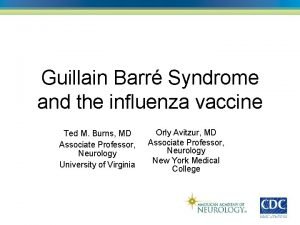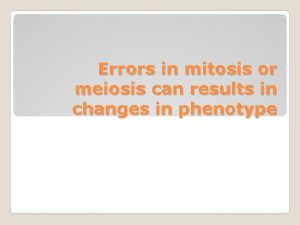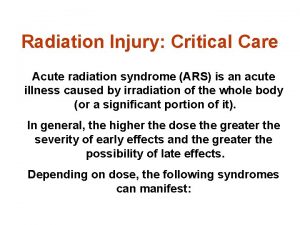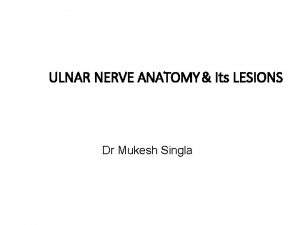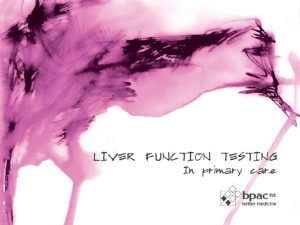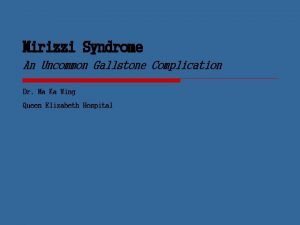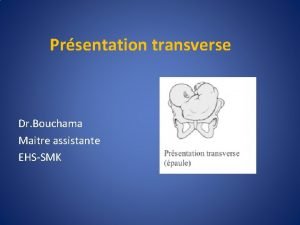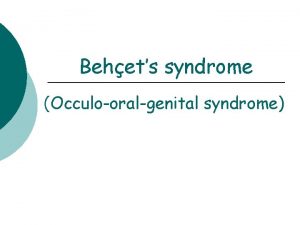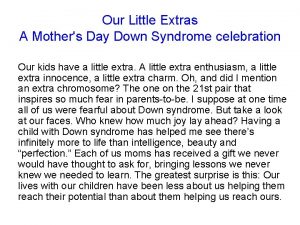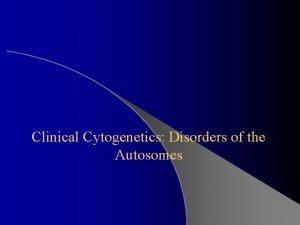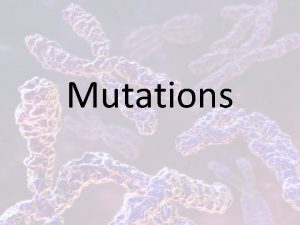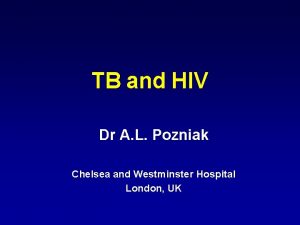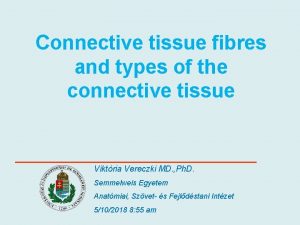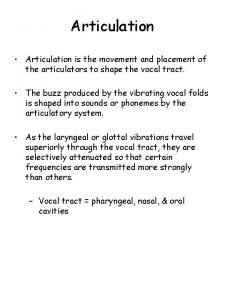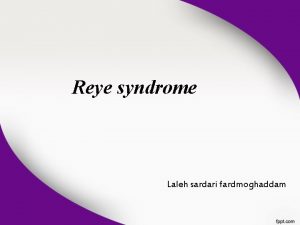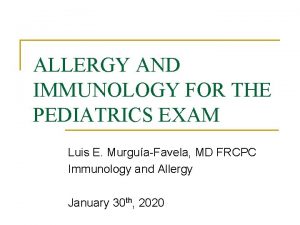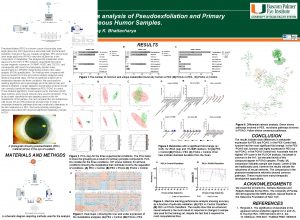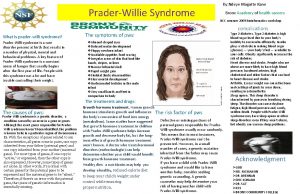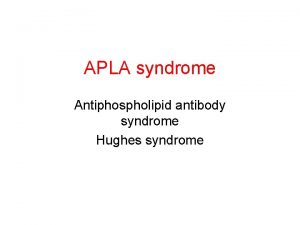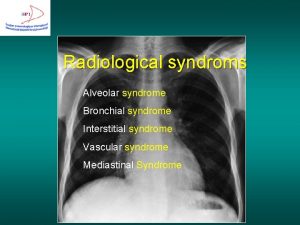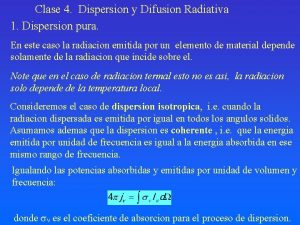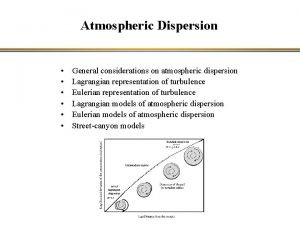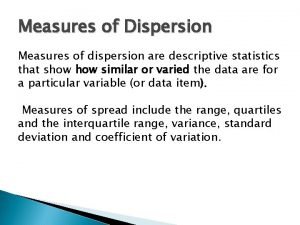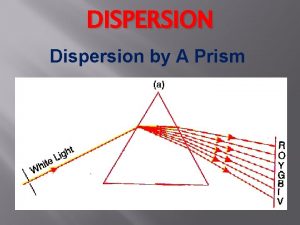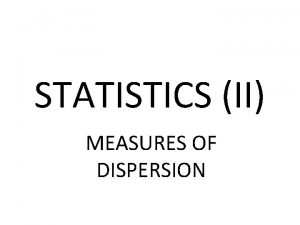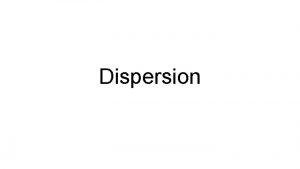1 Q Pseudoexfoliation Syndrome PXS vs Pigmentary Dispersion



































































































































































- Slides: 163

1 Q Pseudoexfoliation Syndrome (PXS) vs Pigmentary Dispersion Syndrome/Pigmentary Glaucoma (PDS/PG): Fill in the blanks PXS Age PDS/PG

2 A Pseudoexfoliation Syndrome (PXS) vs Pigmentary Dispersion Syndrome/Pigmentary Glaucoma (PDS/PG): Fill in the blanks Age PXS PDS/PG Rare <50, usually >70 20 – 50

3 Q Pseudoexfoliation Syndrome (PXS) vs Pigmentary Dispersion Syndrome/Pigmentary Glaucoma (PDS/PG): Fill in the blanks Age Sex predilection PXS PDS/PG Rare <50, usually >70 20 – 50

4 A Pseudoexfoliation Syndrome (PXS) vs Pigmentary Dispersion Syndrome/Pigmentary Glaucoma (PDS/PG): Fill in the blanks PXS PDS/PG Age Rare <50, usually >70 20 – 50 Sex predilection F>M M>F

5 Q Pseudoexfoliation Syndrome (PXS) vs Pigmentary Dispersion Syndrome/Pigmentary Glaucoma (PDS/PG): Fill in the blanks PXS PDS/PG Age Rare <50, usually >70 20 – 50 Sex predilection F>M M>F Angle status

6 A Pseudoexfoliation Syndrome (PXS) vs Pigmentary Dispersion Syndrome/Pigmentary Glaucoma (PDS/PG): Fill in the blanks PXS PDS/PG Age Rare <50, usually >70 20 – 50 Sex predilection F>M M>F Angle status Narrow Wide open

7 Q Pseudoexfoliation Syndrome (PXS) vs Pigmentary Dispersion Syndrome/Pigmentary Glaucoma (PDS/PG): Fill in the blanks PXS PDS/PG Age Rare <50, usually >70 20 s – 40 s Sex predilection F>M M>F Angle status Narrow Wide open Is pseudoexfoliation syndrome a closed-angle form of glaucoma? No, it is a secondary open-angle glaucoma Why is the angle narrowed in PXS? The compromised status of the zonular apparatus allows the lens-iris diaphragm to move forward.

8 Pseudoexfoliation Syndrome (PXS) vs Q/APigmentary Dispersion Syndrome/Pigmentary Glaucoma (PDS/PG): Fill in the blanks PXS PDS/PG Age Rare <50, usually >70 20 s – 40 s Sex predilection F>M M>F Angle status Narrow Wide open Is pseudoexfoliation syndrome a closed-angle form of glaucoma? category of glaucoma (four glaucoma words) No, it is a secondary open-angle Why is the angle narrowed in PXS? The compromised status of the zonular apparatus allows the lens-iris diaphragm to move forward.

9 A Pseudoexfoliation Syndrome (PXS) vs Pigmentary Dispersion Syndrome/Pigmentary Glaucoma (PDS/PG): Fill in the blanks PXS PDS/PG Age Rare <50, usually >70 20 s – 40 s Sex predilection F>M M>F Angle status Narrow Wide open Is pseudoexfoliation syndrome a closed-angle form of glaucoma? No, it is a secondary open-angle glaucoma Why is the angle narrowed in PXS? The compromised status of the zonular apparatus allows the lens-iris diaphragm to move forward.

10 Q Pseudoexfoliation Syndrome (PXS) vs Pigmentary Dispersion Syndrome/Pigmentary Glaucoma (PDS/PG): Fill in the blanks PXS PDS/PG Age Rare <50, usually >70 20 s – 40 s Sex predilection F>M M>F Angle status Narrow Wide open Is pseudoexfoliation syndrome a closed-angle form of glaucoma? No, it is a secondary open-angle glaucoma Why is the angle narrowed in PXS? The compromised status of the zonular apparatus allows the lens-iris diaphragm to move forward.

11 A Pseudoexfoliation Syndrome (PXS) vs Pigmentary Dispersion Syndrome/Pigmentary Glaucoma (PDS/PG): Fill in the blanks PXS PDS/PG Age Rare <50, usually >70 20 s – 40 s Sex predilection F>M M>F Angle status Narrow Wide open Is pseudoexfoliation syndrome a closed-angle form of glaucoma? No, it is a secondary open-angle glaucoma Why is the angle narrowed in PXS? The compromised status of the zonular apparatus allows the lens-iris diaphragm to move forward

12 Q Pseudoexfoliation Syndrome (PXS) vs Pigmentary Dispersion Syndrome/Pigmentary Glaucoma (PDS/PG): Fill in the blanks PXS PDS/PG Age Rare <50, usually >70 20 – 50 Sex predilection F>M M>F Angle status Narrow Wide open Iris transilluminates where?

13 A Pseudoexfoliation Syndrome (PXS) vs Pigmentary Dispersion Syndrome/Pigmentary Glaucoma (PDS/PG): Fill in the blanks PXS PDS/PG Age Rare <50, usually >70 20 – 50 Sex predilection F>M M>F Angle status Narrow Wide open Iris transilluminates where? Margin Radial

Pseudoexfoliation syndrome: ‘Moth eaten’

PDS: ‘Radial’

16 Q Pseudoexfoliation Syndrome (PXS) vs Pigmentary Dispersion Syndrome/Pigmentary Glaucoma (PDS/PG): Fill in the blanks PXS PDS/PG Age Rare <50, usually >70 20 s – 40 s Sex predilection F>M M>F Angle status Narrow Wide open Iris transilluminates where? Margin Radial What mechanism is responsible for the iris TID in… PXS? Atrophic changes. PG? Mechanical rubbing of zonules against the posterior aspect of the iris

17 A Pseudoexfoliation Syndrome (PXS) vs Pigmentary Dispersion Syndrome/Pigmentary Glaucoma (PDS/PG): Fill in the blanks PXS PDS/PG Age Rare <50, usually >70 20 s – 40 s Sex predilection F>M M>F Angle status Narrow Wide open Iris transilluminates where? Margin Radial What mechanism is responsible for the iris TID in… PXS? Primarily an atrophic process PG? Mechanical rubbing of zonules against the posterior aspect of the iris

18 Q Pseudoexfoliation Syndrome (PXS) vs Pigmentary Dispersion Syndrome/Pigmentary Glaucoma (PDS/PG): Fill in the blanks PXS PDS/PG Age Rare <50, usually >70 20 – 50 Sex predilection F>M M>F Angle status Narrow Wide open Iris transilluminates where? Margin Radial Krukenberg spindle--common?

19 A Pseudoexfoliation Syndrome (PXS) vs Pigmentary Dispersion Syndrome/Pigmentary Glaucoma (PDS/PG): Fill in the blanks PXS PDS/PG Age Rare <50, usually >70 20 – 50 Sex predilection F>M M>F Angle status Narrow Wide open Iris transilluminates where? Margin Radial Krukenberg spindle--common? Less common Very common

20 Q Pseudoexfoliation Syndrome (PXS) vs Pigmentary Dispersion Syndrome/Pigmentary Glaucoma (PDS/PG): Fill in the blanks PXS PDS/PG Age Rare <50, usually >70 20 s – 40 s Sex predilection F>M M>F Angle status Narrow Wide open Iris transilluminates where? Margin Radial Krukenberg spindle--common? Less common Very common What is a Krukenberg spindle? A vertical distribution of pigment on the endothelial surface of the cornea. What is the source of this pigment? It is liberated from the posterior aspect of the iris by the rubbing of the zonules. What factors account for the location and shape of the K spindle? Convection currents within the anterior chamber funnel pigment into this area

21 A Pseudoexfoliation Syndrome (PXS) vs Pigmentary Dispersion Syndrome/Pigmentary Glaucoma (PDS/PG): Fill in the blanks PXS PDS/PG Age Rare <50, usually >70 20 s – 40 s Sex predilection F>M M>F Angle status Narrow Wide open Iris transilluminates where? Margin Radial Krukenberg spindle--common? Less common Very common What is a Krukenberg spindle? A vertical distribution of pigment on the endothelial surface of the cornea What is the source of this pigment? It is liberated from the posterior aspect of the iris by the rubbing of the zonules. What factors account for the location and shape of the K spindle? Convection currents within the anterior chamber funnel pigment into this area

22 Krukenberg spindle

23 Q Pseudoexfoliation Syndrome (PXS) vs Pigmentary Dispersion Syndrome/Pigmentary Glaucoma (PDS/PG): Fill in the blanks PXS PDS/PG Age Rare <50, usually >70 20 s – 40 s Sex predilection F>M M>F Angle status Narrow Wide open Iris transilluminates where? Margin Radial Krukenberg spindle--common? Less common Very common What is a Krukenberg spindle? A vertical distribution of pigment on the endothelial surface of the cornea What is the source of this pigment? It is liberated from the posterior aspect of the iris by the rubbing of the zonules. What factors account for the location and shape of the K spindle? Convection currents within the anterior chamber funnel pigment into this area

24 A Pseudoexfoliation Syndrome (PXS) vs Pigmentary Dispersion Syndrome/Pigmentary Glaucoma (PDS/PG): Fill in the blanks PXS PDS/PG Age Rare <50, usually >70 20 s – 40 s Sex predilection F>M M>F Angle status Narrow Wide open Iris transilluminates where? Margin Radial Krukenberg spindle--common? Less common Very common What is a Krukenberg spindle? A vertical distribution of pigment on the endothelial surface of the cornea What is the source of this pigment? It is liberated from the posterior aspect of the iris by the rubbing of the zonules What factors account for the location and shape of the K spindle? Convection currents within the anterior chamber funnel pigment into this area

25 Q Pseudoexfoliation Syndrome (PXS) vs Pigmentary Dispersion Syndrome/Pigmentary Glaucoma (PDS/PG): Fill in the blanks PXS PDS/PG Age Rare <50, usually >70 20 s – 40 s Sex predilection F>M M>F Angle status Narrow Wide open Iris transilluminates where? Margin Radial Krukenberg spindle--common? Less common Very common What is a Krukenberg spindle? A vertical distribution of pigment on the endothelial surface of the cornea What is the source of this pigment? It is liberated from the posterior aspect of the iris by the rubbing of the zonules What factors account for the location and shape of the K spindle? Convection currents within the anterior chamber funnel pigment into this area

26 A Pseudoexfoliation Syndrome (PXS) vs Pigmentary Dispersion Syndrome/Pigmentary Glaucoma (PDS/PG): Fill in the blanks PXS PDS/PG Age Rare <50, usually >70 20 s – 40 s Sex predilection F>M M>F Angle status Narrow Wide open Iris transilluminates where? Margin Radial Krukenberg spindle--common? Less common Very common What is a Krukenberg spindle? A vertical distribution of pigment on the endothelial surface of the cornea What is the source of this pigment? It is liberated from the posterior aspect of the iris by the rubbing of the zonules What factors account for the location and shape of the K spindle? Convection currents within the anterior chamber funnel pigment into this area

27 Q Pseudoexfoliation Syndrome (PXS) vs Pigmentary Dispersion Syndrome/Pigmentary Glaucoma (PDS/PG): Fill in the blanks PXS PDS/PG Age Rare <50, usually >70 20 s – 40 s Sex predilection F>M M>F Angle status Narrow Wide open Iris transilluminates where? Margin Radial Is Krukenberg spindle pathognomonic for PDS and/or PXS? Krukenberg spindle--common? Very No, it can occur Less in any common ocular condition in which pigment is common liberated within the anterior segment of the eye (eg, uveitis) What is a Krukenberg spindle? A vertical distribution of pigment on the endothelial surface of the cornea What is the source of this pigment? It is liberated from the posterior aspect of the iris by the rubbing of the zonules What factors account for the location and shape of the K spindle? Convection currents within the anterior chamber funnel pigment into this area

28 A Pseudoexfoliation Syndrome (PXS) vs Pigmentary Dispersion Syndrome/Pigmentary Glaucoma (PDS/PG): Fill in the blanks PXS PDS/PG Age Rare <50, usually >70 20 s – 40 s Sex predilection F>M M>F Angle status Narrow Wide open Iris transilluminates where? Margin Radial Is Krukenberg spindle pathognomonic for PDS and/or PXS? Krukenberg spindle--common? Very No, it can occur Less in any common ocular condition in which pigment is common liberated within the anterior segment of the eye (eg, uveitis) What is a Krukenberg spindle? A vertical distribution of pigment on the endothelial surface of the cornea What is the source of this pigment? It is liberated from the posterior aspect of the iris by the rubbing of the zonules What factors account for the location and shape of the K spindle? Convection currents within the anterior chamber funnel pigment into this area

29 Q Pseudoexfoliation Syndrome (PXS) vs Pigmentary Dispersion Syndrome/Pigmentary Glaucoma (PDS/PG): Fill in the blanks As PDS pts get older, what happens to their TIDs and K spindle? They tend to become less prominent PXS Age Rare <50, usually >70 Why? Age-related in the architecture of the anterior Sexchanges predilection F>Msegment, coupled with decreased accommodation-related movement of the lens, result in Angle status Narrow less and less contact between the posterior iris and the zonules, and therefore smaller and smaller amounts of liberated pigment. Iris transilluminates where? Margin What about IOP? Krukenberg spindle--common? The IOP may normalize by age 60 or so. Less common PDS/PG 20 – 50 M>F Wide open Radial Very common

30 Pseudoexfoliation Syndrome (PXS) vs Q/APigmentary Dispersion Syndrome/Pigmentary Glaucoma (PDS/PG): Fill in the blanks As PDS pts get older, what happens to their TIDs and K spindle? more vs They tend to become less prominent PXS less Age Rare <50, usually >70 Why? Age-related in the architecture of the anterior Sexchanges predilection F>Msegment, coupled with decreased accommodation-related movement of the lens, result in Angle status Narrow less and less contact between the posterior iris and the zonules, and therefore smaller and smaller amounts of liberated pigment. Iris transilluminates where? Margin What about IOP? Krukenberg spindle--common? The IOP may normalize by age 60 or so. Less common PDS/PG 20 – 50 M>F Wide open Radial Very common

31 A Pseudoexfoliation Syndrome (PXS) vs Pigmentary Dispersion Syndrome/Pigmentary Glaucoma (PDS/PG): Fill in the blanks As PDS pts get older, what happens to their TIDs and K spindle? They tend to become less prominent PXS Age Rare <50, usually >70 Why? Age-related in the architecture of the anterior Sexchanges predilection F>Msegment, coupled with decreased accommodation-related movement of the lens, result in Angle status Narrow less and less contact between the posterior iris and the zonules, and therefore smaller and smaller amounts of liberated pigment. Iris transilluminates where? Margin What about IOP? Krukenberg spindle--common? The IOP may normalize by age 60 or so. Less common PDS/PG 20 – 50 M>F Wide open Radial Very common

32 Q Pseudoexfoliation Syndrome (PXS) vs Pigmentary Dispersion Syndrome/Pigmentary Glaucoma (PDS/PG): Fill in the blanks As PDS pts get older, what happens to their TIDs and K spindle? They tend to become less prominent PXS Age Rare <50, usually >70 Why? Age-related in the architecture of the anterior Sexchanges predilection F>Msegment, coupled with decreased accommodation-related movement of the lens, result in Angle status Narrow less and less contact between the posterior iris and the zonules, and therefore smaller and smaller amounts of liberated pigment. Iris transilluminates where? Margin What about IOP? Krukenberg spindle--common? The IOP may normalize by age 60 or so. Less common PDS/PG 20 – 50 M>F Wide open Radial Very common

33 A Pseudoexfoliation Syndrome (PXS) vs Pigmentary Dispersion Syndrome/Pigmentary Glaucoma (PDS/PG): Fill in the blanks As PDS pts get older, what happens to their TIDs and K spindle? They tend to become less prominent PXS Age Rare <50, usually >70 Why? Age-related in the architecture of the anterior Sexchanges predilection F>Msegment, coupled with decreased accommodation-related movement of the lens, result in Angle status Narrow less and less contact between the posterior iris and the zonules, and therefore smaller and smaller amounts of liberated pigment Iris transilluminates where? Margin What about IOP? Krukenberg spindle--common? The IOP may normalize by age 60 or so. Less common PDS/PG 20 – 50 M>F Wide open Radial Very common

34 Q Pseudoexfoliation Syndrome (PXS) vs Pigmentary Dispersion Syndrome/Pigmentary Glaucoma (PDS/PG): Fill in the blanks As PDS pts get older, what happens to their TIDs and K spindle? They tend to become less prominent PXS Age Rare <50, usually >70 Why? Age-related in the architecture of the anterior Sexchanges predilection F>Msegment, coupled with decreased accommodation-related movement of the lens, result in Angle status Narrow less and less contact between the posterior iris and the zonules, and therefore smaller and smaller amounts of liberated pigment Iris transilluminates where? Margin What about IOP? Krukenberg spindle--common? The IOP may normalize by age 60 or so. Less common PDS/PG 20 – 50 M>F Wide open Radial Very common

35 Pseudoexfoliation Syndrome (PXS) vs Q/APigmentary Dispersion Syndrome/Pigmentary Glaucoma (PDS/PG): Fill in the blanks As PDS pts get older, what happens to their TIDs and K spindle? They tend to become less prominent PXS Age Rare <50, usually >70 Why? Age-related in the architecture of the anterior Sexchanges predilection F>Msegment, coupled with decreased accommodation-related movement of the lens, result in Angle status Narrow less and less contact between the posterior iris and the zonules, and therefore smaller and smaller amounts of liberated pigment Iris transilluminates where? Margin What about IOP? Krukenberg spindle--common? # The IOP may normalize by age 60 or so Less common PDS/PG 20 – 50 M>F Wide open Radial Very common

36 A Pseudoexfoliation Syndrome (PXS) vs Pigmentary Dispersion Syndrome/Pigmentary Glaucoma (PDS/PG): Fill in the blanks As PDS pts get older, what happens to their TIDs and K spindle? They tend to become less prominent PXS Age Rare <50, usually >70 Why? Age-related in the architecture of the anterior Sexchanges predilection F>Msegment, coupled with decreased accommodation-related movement of the lens, result in Angle status Narrow less and less contact between the posterior iris and the zonules, and therefore smaller and smaller amounts of liberated pigment Iris transilluminates where? Margin What about IOP? Krukenberg spindle--common? The IOP may normalize by age 60 or so Less common PDS/PG 20 – 50 M>F Wide open Radial Very common

37 Q Pseudoexfoliation Syndrome (PXS) vs Pigmentary Dispersion Syndrome/Pigmentary Glaucoma (PDS/PG): Fill in the blanks PXS PDS/PG Age Rare <50, usually >70 20 – 50 Sex predilection F>M M>F Angle status Narrow Wide open Iris transilluminates where? Margin Radial Krukenberg spindle--common? Less common Very common Sampaolesi line--common?

38 A Pseudoexfoliation Syndrome (PXS) vs Pigmentary Dispersion Syndrome/Pigmentary Glaucoma (PDS/PG): Fill in the blanks PXS PDS/PG Age Rare <50, usually >70 20 – 50 Sex predilection F>M M>F Angle status Narrow Wide open Iris transilluminates where? Margin Radial Krukenberg spindle--common? Less common Very common Sampaolesi line--common? Very common Less common

39 Q Pseudoexfoliation Syndrome (PXS) vs Pigmentary Dispersion Syndrome/Pigmentary Glaucoma (PDS/PG): Fill in the blanks PXS PDS/PG Age Rare <50, usually >70 20 s – 40 s Sex predilection F>M M>F Angle status Narrow Wide open Iris transilluminates where? Margin Radial Krukenberg spindle--common? Less common Very common Sampaolesi line--common? Very common Less common What is a Sampaolesi line? A scalloped line of pigment present anterior (ie, ‘above’ on gonioscopy) to Schwalbe’s line in the angle. It may seem counterintuitive that a pigment-related exam finding would be more common in PXS and less in PDS/PG (it certainly does to me), but that’s the way it is. Be sure to make a mental note of this!

40 A Pseudoexfoliation Syndrome (PXS) vs Pigmentary Dispersion Syndrome/Pigmentary Glaucoma (PDS/PG): Fill in the blanks PXS PDS/PG Age Rare <50, usually >70 20 s – 40 s Sex predilection F>M M>F Angle status Narrow Wide open Iris transilluminates where? Margin Radial Krukenberg spindle--common? Less common Very common Sampaolesi line--common? Very common Less common What is a Sampaolesi line? A scalloped line of pigment present anterior (ie, ‘above’ on gonioscopy) to Schwalbe’s line in the angle. It may seem counterintuitive that a pigment-related exam finding would be more common in PXS and less in PDS/PG (it certainly does to me), but that’s the way it is. Be sure to make a mental note of this!

41 Sampaolesi line

42 Q Pseudoexfoliation Syndrome (PXS) vs Pigmentary Dispersion Syndrome/Pigmentary Glaucoma (PDS/PG): Fill in the blanks Age PXS PDS/PG Rare <50, usually >70 20 s – 40 s In addition to the cornea’s endothelial surface (K spindle) F>M line), in what other anterior- M>F and the angle (Sampaolesi segment location is Narrow pigment known to accumulate in Wide open Angle status PDS/PG? Iris transilluminates where? The area of zonular Margin insertion on the posterior aspect of Radial the lens capsule Krukenberg spindle--common? Less common Very common Sex predilection By what eponymous is this sign known? Sampaolesi line--common? Verynames common Scheie stripe or Zentmayer line Less common Is this finding pathognomonic for PDS/PG? Yes Does Scheie’s stripe fade with time like the K spindle and Sampaolesi line? No (a fact that increases its value as an exam finding)

43 A Pseudoexfoliation Syndrome (PXS) vs Pigmentary Dispersion Syndrome/Pigmentary Glaucoma (PDS/PG): Fill in the blanks Age PXS PDS/PG Rare <50, usually >70 20 s – 40 s In addition to the cornea’s endothelial surface (K spindle) F>M line), in what other anterior- M>F and the angle (Sampaolesi segment location is Narrow pigment known to accumulate in Wide open Angle status PDS/PG? Iris transilluminates where? The area of zonular Margin insertion on the posterior aspect of Radial the lens capsule Krukenberg spindle--common? Less common Very common Sex predilection By what eponymous is this sign known? Sampaolesi line--common? Verynames common Scheie stripe or Zentmayer line Less common Is this finding pathognomonic for PDS/PG? Yes Does Scheie’s stripe fade with time like the K spindle and Sampaolesi line? No (a fact that increases its value as an exam finding)

44 Q Pseudoexfoliation Syndrome (PXS) vs Pigmentary Dispersion Syndrome/Pigmentary Glaucoma (PDS/PG): Fill in the blanks Age PXS PDS/PG Rare <50, usually >70 20 s – 40 s In addition to the cornea’s endothelial surface (K spindle) F>M line), in what other anterior- M>F and the angle (Sampaolesi segment location is Narrow pigment known to accumulate in Wide open Angle status PDS/PG? Iris transilluminates where? Radial The area of zonular. Margin insertion on the posterior aspect of the lens capsule Krukenberg spindle--common? Less common Very common Sex predilection By what eponymous is this sign known? Sampaolesi line--common? Verynames common Scheie stripe or Zentmayer line Less common Is this finding pathognomonic for PDS/PG? Yes Does Scheie’s stripe fade with time like the K spindle and Sampaolesi line? No (a fact that increases its value as an exam finding)

45 Pseudoexfoliation Syndrome (PXS) vs Q/APigmentary Dispersion Syndrome/Pigmentary Glaucoma (PDS/PG): Fill in the blanks Age PXS PDS/PG Rare <50, usually >70 20 s – 40 s In addition to the cornea’s endothelial surface (K spindle) F>M line), in what other anterior- M>F and the angle (Sampaolesi segment location is Narrow pigment known to accumulate in Wide open Angle status PDS/PG? Iris transilluminates where? Radial The area of zonular. Margin insertion on the posterior aspect of the lens capsule Krukenberg spindle--common? Less common Very common Sex predilection By what eponymous is this sign known? Sampaolesi line--common? Verynames common eponym 1 stripe or Zentmayer eponym 2 Scheie line Less common Is this finding pathognomonic for PDS/PG? Yes Does Scheie’s stripe fade with time like the K spindle and Sampaolesi line? No (a fact that increases its value as an exam finding)

46 A Pseudoexfoliation Syndrome (PXS) vs Pigmentary Dispersion Syndrome/Pigmentary Glaucoma (PDS/PG): Fill in the blanks Age PXS PDS/PG Rare <50, usually >70 20 s – 40 s In addition to the cornea’s endothelial surface (K spindle) F>M line), in what other anterior- M>F and the angle (Sampaolesi segment location is Narrow pigment known to accumulate in Wide open Angle status PDS/PG? Iris transilluminates where? Radial The area of zonular. Margin insertion on the posterior aspect of the lens capsule Krukenberg spindle--common? Less common Very common Sex predilection By what eponymous is this sign known? Sampaolesi line--common? Verynames common Scheie stripe or Zentmayer line Less common Is this finding pathognomonic for PDS/PG? Yes Does Scheie’s stripe fade with time like the K spindle and Sampaolesi line? No (a fact that increases its value as an exam finding)

47 Pseudoexfoliation Syndrome (PXS) vs Pigmentary Dispersion Syndrome/Pigmentary Glaucoma (PDS/PG): Fill in the blanks Age PXS PDS/PG Rare <50, usually >70 20 s – 40 s In addition to the cornea’s endothelial surface (K spindle) F>M line), in what other anterior- M>F and the angle (Sampaolesi segment location is Narrow pigment known to accumulate in Wide open Angle status PDS/PG? Iris transilluminates where? Radial The area of zonular. Margin insertion on the posterior aspect of the lens capsule Krukenberg spindle--common? Less common Very common Sex predilection By what eponymous is this sign known? Sampaolesi line--common? Verynames common Scheie stripe or Zentmayer line Less common (Note: For some reason, the BCSC Glaucoma book prefers the Is this finding pathognomonic for PDS/PG? much-less-commonly-used term Zentmayer line for this finding. Yesmake sure to know both names!) So Does Scheie’s stripe fade with time like the K spindle and Sampaolesi line? No (a fact that increases its value as an exam finding)

Scheie stripe

Scheie stripe

50 Q Pseudoexfoliation Syndrome (PXS) vs Pigmentary Dispersion Syndrome/Pigmentary Glaucoma (PDS/PG): Fill in the blanks Age PXS PDS/PG Rare <50, usually >70 20 s – 40 s In addition to the cornea’s endothelial surface (K spindle) F>M line), in what other anterior- M>F and the angle (Sampaolesi segment location is Narrow pigment known to accumulate in Wide open Angle status PDS/PG? Iris transilluminates where? The area of zonular Margin insertion on the posterior aspect of Radial the lens capsule Krukenberg spindle--common? Less common Very common Sex predilection By what eponymous is this sign known? Sampaolesi line--common? Verynames common Scheie stripe or Zentmayer line Less common Is this finding pathognomonic for PDS/PG? Yes Does Scheie’s stripe fade with time like the K spindle and Sampaolesi line? No (a fact that increases its value as an exam finding)

51 A Pseudoexfoliation Syndrome (PXS) vs Pigmentary Dispersion Syndrome/Pigmentary Glaucoma (PDS/PG): Fill in the blanks Age PXS PDS/PG Rare <50, usually >70 20 s – 40 s In addition to the cornea’s endothelial surface (K spindle) F>M line), in what other anterior- M>F and the angle (Sampaolesi segment location is Narrow pigment known to accumulate in Wide open Angle status PDS/PG? Iris transilluminates where? The area of zonular Margin insertion on the posterior aspect of Radial the lens capsule Krukenberg spindle--common? Less common Very common Sex predilection By what eponymous is this sign known? Sampaolesi line--common? Verynames common Scheie stripe or Zentmayer line Less common Is this finding pathognomonic for PDS/PG? Yes Does Scheie’s stripe fade with time like the K spindle and Sampaolesi line? No (a fact that increases its value as an exam finding)

52 Q Pseudoexfoliation Syndrome (PXS) vs Pigmentary Dispersion Syndrome/Pigmentary Glaucoma (PDS/PG): Fill in the blanks Age PXS PDS/PG Rare <50, usually >70 20 s – 40 s In addition to the cornea’s endothelial surface (K spindle) F>M line), in what other anterior- M>F and the angle (Sampaolesi segment location is Narrow pigment known to accumulate in Wide open Angle status PDS/PG? Iris transilluminates where? The area of zonular Margin insertion on the posterior aspect of Radial the lens capsule Krukenberg spindle--common? Less common Very common Sex predilection By what eponymous is this sign known? Sampaolesi line--common? Verynames common Scheie stripe or Zentmayer line Less common Is this finding pathognomonic for PDS/PG? Yes Does Scheie’s stripe fade with time like the K spindle and Sampaolesi line? No (a fact that increases its value as an exam finding)

53 A Pseudoexfoliation Syndrome (PXS) vs Pigmentary Dispersion Syndrome/Pigmentary Glaucoma (PDS/PG): Fill in the blanks Age PXS PDS/PG Rare <50, usually >70 20 s – 40 s In addition to the cornea’s endothelial surface (K spindle) F>M line), in what other anterior- M>F and the angle (Sampaolesi segment location is Narrow pigment known to accumulate in Wide open Angle status PDS/PG? Iris transilluminates where? The area of zonular Margin insertion on the posterior aspect of Radial the lens capsule Krukenberg spindle--common? Less common Very common Sex predilection By what eponymous is this sign known? Sampaolesi line--common? Verynames common Scheie stripe or Zentmayer line Less common Is this finding pathognomonic for PDS/PG? Yes Does Scheie’s stripe fade with time like the K spindle and Sampaolesi line? No (a fact that increases its value as an exam finding)

54 Q Pseudoexfoliation Syndrome (PXS) vs Pigmentary Dispersion Syndrome/Pigmentary Glaucoma (PDS/PG): Fill in the blanks PXS PDS/PG Age Rare <50, usually >70 20 s – 40 s Sex predilection F>M M>F In addition to the cornea K spindle and Sampaolesi line, what other anterior. Narrow Wide open segment finding is an even more prominent characteristic of PXS? Iris transilluminates where? Margin Radial The presence of fibrillar material on the anterior lens capsule Krukenberg spindle--common? Less common Very common What sort of pattern does this material form on the capsule? Sampaolesi line--common? Very common Less common ‘Target-like’ Angle status What accounts for the target-like distribution of the material? The movement of the iris across the capsule as the pupil dilates and constricts

55 A Pseudoexfoliation Syndrome (PXS) vs Pigmentary Dispersion Syndrome/Pigmentary Glaucoma (PDS/PG): Fill in the blanks PXS PDS/PG Age Rare <50, usually >70 20 s – 40 s Sex predilection F>M M>F In addition to the cornea K spindle and Sampaolesi line, what other anterior. Narrow Wide open segment finding is an even more prominent characteristic of PXS? Iris transilluminates where? Margin Radial The presence of fibrillar material on the anterior lens capsule Krukenberg spindle--common? Less common Very common What sort of pattern does this material form on the capsule? Sampaolesi line--common? Very common Less common ‘Target-like’ Angle status What accounts for the target-like distribution of the material? The movement of the iris across the capsule as the pupil dilates and constricts

56 Q Pseudoexfoliation Syndrome (PXS) vs Pigmentary Dispersion Syndrome/Pigmentary Glaucoma (PDS/PG): Fill in the blanks PXS PDS/PG Age Rare <50, usually >70 20 s – 40 s Sex predilection F>M M>F In addition to the cornea K spindle and Sampaolesi line, what other anterior. Narrow Wide open segment finding is an even more prominent characteristic of PXS? Iris transilluminates where? Margin Radial The presence of fibrillar material on the anterior lens capsule Krukenberg spindle--common? Less common Very common What sort of pattern does this material form on the capsule? Sampaolesi line--common? Very common Less common ‘Target-like’ Angle status What accounts for the target-like distribution of the material? The movement of the iris across the capsule as the pupil dilates and constricts

57 A Pseudoexfoliation Syndrome (PXS) vs Pigmentary Dispersion Syndrome/Pigmentary Glaucoma (PDS/PG): Fill in the blanks PXS PDS/PG Age Rare <50, usually >70 20 s – 40 s Sex predilection F>M M>F In addition to the cornea K spindle and Sampaolesi line, what other anterior. Narrow Wide open segment finding is an even more prominent characteristic of PXS? Iris transilluminates where? Margin Radial The presence of fibrillar material on the anterior lens capsule Krukenberg spindle--common? Less common Very common What sort of pattern does this material form on the capsule? Sampaolesi line--common? Very common Less common ‘Target-like’ Angle status What accounts for the target-like distribution of the material? The movement of the iris across the capsule as the pupil dilates and constricts

PXS: Fibrillar material on anterior lens capsule

PXS: Fibrillar material on anterior lens capsule

60 Q Pseudoexfoliation Syndrome (PXS) vs Pigmentary Dispersion Syndrome/Pigmentary Glaucoma (PDS/PG): Fill in the blanks PXS PDS/PG Age Rare <50, usually >70 20 s – 40 s Sex predilection F>M M>F In addition to the cornea K spindle and Sampaolesi line, what other anterior. Narrow Wide open segment finding is an even more prominent characteristic of PXS? Iris transilluminates where? Margin Radial The presence of fibrillar material on the anterior lens capsule Krukenberg spindle--common? Less common Very common What sort of pattern does this material form on the capsule? Sampaolesi line--common? Very common Less common ‘Target-like’ Angle status What accounts for the target-like distribution of the material? The movement of the iris across the capsule as the pupil dilates and constricts

61 A Pseudoexfoliation Syndrome (PXS) vs Pigmentary Dispersion Syndrome/Pigmentary Glaucoma (PDS/PG): Fill in the blanks PXS PDS/PG Age Rare <50, usually >70 20 s – 40 s Sex predilection F>M M>F In addition to the cornea K spindle and Sampaolesi line, what other anterior. Narrow Wide open segment finding is an even more prominent characteristic of PXS? Iris transilluminates where? Margin Radial The presence of fibrillar material on the anterior lens capsule Krukenberg spindle--common? Less common Very common What sort of pattern does this material form on the capsule? Sampaolesi line--common? Very common Less common ‘Target-like’ Angle status What accounts for the target-like distribution of the material? The movement of the iris across the capsule as the pupil dilates and constricts

62 Q Pseudoexfoliation Syndrome (PXS) vs Pigmentary Dispersion Syndrome/Pigmentary Glaucoma (PDS/PG): Fill in the blanks PXS PDS/PG Age Rare <50, usually >70 20 s – 40 s Sex predilection F>M M>F In addition to the cornea K spindle and Sampaolesi line, what other anterior. Narrow Wide open segment finding is an even more prominent characteristic of PXS? Iris transilluminates where? Margin Radial The presence of fibrillar material on the anterior lens capsule Krukenberg spindle--common? Less common Is this material limited to the anterior lens surface? Very common What sort of pattern does this material form on the capsule? No, it can be Very found common throughout both the anterior and posterior chambers Sampaolesi line--common? Less common ‘Target-like’ Angle status What accounts for the target-like distribution of the material? The movement of the iris across the capsule as the pupil dilates and constricts

63 A Pseudoexfoliation Syndrome (PXS) vs Pigmentary Dispersion Syndrome/Pigmentary Glaucoma (PDS/PG): Fill in the blanks PXS PDS/PG Age Rare <50, usually >70 20 s – 40 s Sex predilection F>M M>F In addition to the cornea K spindle and Sampaolesi line, what other anterior. Narrow Wide open segment finding is an even more prominent characteristic of PXS? Iris transilluminates where? Margin Radial The presence of fibrillar material on the anterior lens capsule Krukenberg spindle--common? Less common Is this material limited to the anterior lens surface? Very common What sort of pattern does this material form on the capsule? No, it can be Very found common throughout both the anterior and posterior chambers Sampaolesi line--common? Less common ‘Target-like’ Angle status What accounts for the target-like distribution of the material? The movement of the iris across the capsule as the pupil dilates and constricts

PXS: Fibrillar material on posterior iris, and ciliary processes

Look like ‘iron filings’ PXS: Fibrillar material on ciliary processes (high mag)

66 Q Pseudoexfoliation Syndrome (PXS) vs Pigmentary Dispersion Syndrome/Pigmentary Glaucoma (PDS/PG): Fill in the blanks PXS PDS/PG Age Rare <50, usually >70 20 – 50 Sex predilection F>M M>F Angle status Narrow Wide open Iris transilluminates where? Margin Radial Krukenberg spindle--common? Less common Very common Sampaolesi line--common? Very common Less common Systemic disorder?

67 A Pseudoexfoliation Syndrome (PXS) vs Pigmentary Dispersion Syndrome/Pigmentary Glaucoma (PDS/PG): Fill in the blanks PXS PDS/PG Age Rare <50, usually >70 20 – 50 Sex predilection F>M M>F Angle status Narrow Wide open Iris transilluminates where? Margin Radial Krukenberg spindle--common? Less common Very common Sampaolesi line--common? Very common Less common Systemic disorder? Yes No

68 Q Pseudoexfoliation Syndrome (PXS) vs Pigmentary Dispersion Syndrome/Pigmentary Glaucoma (PDS/PG): Fill in the blanks PXS PDS/PG Age Rare <50, usually >70 20 s – 40 s Sex predilection F>M M>F Angle status Narrow Wide open Iris transilluminates where? Margin Radial Krukenberg spindle--common? Less common Very common Sampaolesi line--common? Very common Less common Systemic disorder? Yes No What does this mean, PXS is a systemic disorder? The same fibrillar material found in the anterior chamber is found in distant organs What sort of material is the fibrillar material? Abnormal basement membrane

69 A Pseudoexfoliation Syndrome (PXS) vs Pigmentary Dispersion Syndrome/Pigmentary Glaucoma (PDS/PG): Fill in the blanks PXS PDS/PG Age Rare <50, usually >70 20 s – 40 s Sex predilection F>M M>F Angle status Narrow Wide open Iris transilluminates where? Margin Radial Krukenberg spindle--common? Less common Very common Sampaolesi line--common? Very common Less common Systemic disorder? Yes No What does this mean, PXS is a systemic disorder? The same fibrillar material found in the anterior chamber is found in distant organs What sort of material is the fibrillar material? Abnormal basement membrane

70 Q Pseudoexfoliation Syndrome (PXS) vs Pigmentary Dispersion Syndrome/Pigmentary Glaucoma (PDS/PG): Fill in the blanks PXS PDS/PG Age Rare <50, usually >70 20 s – 40 s Sex predilection F>M M>F Angle status Narrow Wide open Iris transilluminates where? Margin Radial Krukenberg spindle--common? Less common Very common Sampaolesi line--common? Very common Less common Systemic disorder? Yes No What does this mean, PXS is a systemic disorder? The same fibrillar material found in the anterior chamber is found in distant organs What sort of material is the fibrillar material? Abnormal basement membrane

71 A Pseudoexfoliation Syndrome (PXS) vs Pigmentary Dispersion Syndrome/Pigmentary Glaucoma (PDS/PG): Fill in the blanks PXS PDS/PG Age Rare <50, usually >70 20 s – 40 s Sex predilection F>M M>F Angle status Narrow Wide open Iris transilluminates where? Margin Radial Krukenberg spindle--common? Less common Very common Sampaolesi line--common? Very common Less common Systemic disorder? Yes No What does this mean, PXS is a systemic disorder? The same fibrillar material found in the anterior chamber is found in distant organs What sort of material is the fibrillar material? It is composed of connective tissues, mainly elastin and collagen

72 Q Pseudoexfoliation Syndrome (PXS) vs Pigmentary Dispersion Syndrome/Pigmentary Glaucoma (PDS/PG): Fill in the blanks PXS PDS/PG Age Rare <50, usually >70 20 – 50 Sex predilection F>M M>F Angle status Narrow Wide open Iris transilluminates where? Margin Radial Krukenberg spindle--common? Less common Very common Sampaolesi line--common? Very common Less common Systemic disorder? Yes No ↑ risk complications during CE?

73 A Pseudoexfoliation Syndrome (PXS) vs Pigmentary Dispersion Syndrome/Pigmentary Glaucoma (PDS/PG): Fill in the blanks PXS PDS/PG Age Rare <50, usually >70 20 – 50 Sex predilection F>M M>F Angle status Narrow Wide open Iris transilluminates where? Margin Radial Krukenberg spindle--common? Less common Very common Sampaolesi line--common? Very common Less common Systemic disorder? Yes No ↑ risk complications during CE? Yes No

74 Q Pseudoexfoliation Syndrome (PXS) vs Pigmentary Dispersion Syndrome/Pigmentary Glaucoma (PDS/PG): Fill in the blanks PXS PDS/PG Age Rare <50, usually >70 20 – 50 Sex predilection F>M M>F Angle status Narrow Wide open Iris transilluminates where? Margin Radial Krukenberg spindle--common? Less common Very common Sampaolesi line--common? Very common Less common Systemic disorder? Yes No ↑ risk complications during CE? Yes No One important cause of increased risk of intraoperative complications during CE surgery in PXS is due to adj. form noun form the zonular weakness associated with this condition. Weakened zonules are not a feature of PDS.

75 A Pseudoexfoliation Syndrome (PXS) vs Pigmentary Dispersion Syndrome/Pigmentary Glaucoma (PDS/PG): Fill in the blanks PXS PDS/PG Age Rare <50, usually >70 20 – 50 Sex predilection F>M M>F Angle status Narrow Wide open Iris transilluminates where? Margin Radial Krukenberg spindle--common? Less common Very common Sampaolesi line--common? Very common Less common Systemic disorder? Yes No ↑ risk complications during CE? Yes No One important cause of increased risk of intraoperative complications during CE surgery in PXS is due to the zonular weakness associated with this condition. Weakened zonules are not a feature of PDS.

76 Q Pseudoexfoliation Syndrome (PXS) vs Pigmentary Dispersion Syndrome/Pigmentary Glaucoma (PDS/PG): Fill in the blanks PXS PDS/PG Age Rare <50, usually >70 20 s – 40 s Sex predilection F>M M>F Angle status Narrow Wide open Iris transilluminates where? Margin what iris-related issue renders Radial In addition to complications owing to zonular weakness, CE in PXS trickier? PXS pts tend to dilate poorly Krukenberg spindle--common? Less common Very common line--common? Very common Less common Why. Sampaolesi do they dilate poorly? The presence of the fibrillar material within the dilator dilation Systemic disorder? Yesmuscle and its blood vessels compromises No ↑ risk complications during CE? Yes No One important cause of increased risk of intraoperative complications during CE surgery in PXS is due to the zonular weakness associated with this condition. Weakened zonules are not a feature of PDS.

77 A Pseudoexfoliation Syndrome (PXS) vs Pigmentary Dispersion Syndrome/Pigmentary Glaucoma (PDS/PG): Fill in the blanks PXS PDS/PG Age Rare <50, usually >70 20 s – 40 s Sex predilection F>M M>F Angle status Narrow Wide open Iris transilluminates where? Margin what iris-related issue renders Radial In addition to complications owing to zonular weakness, CE in PXS trickier? PXS eyes tendspindle--common? to dilate poorly Krukenberg Less common Very common line--common? Very common Less common Why. Sampaolesi do they dilate poorly? The presence of the fibrillar material within the dilator dilation Systemic disorder? Yesmuscle and its blood vessels compromises No ↑ risk complications during CE? Yes No One important cause of increased risk of intraoperative complications during CE surgery in PXS is due to the zonular weakness associated with this condition. Weakened zonules are not a feature of PDS.

78 Q Pseudoexfoliation Syndrome (PXS) vs Pigmentary Dispersion Syndrome/Pigmentary Glaucoma (PDS/PG): Fill in the blanks PXS PDS/PG Age Rare <50, usually >70 20 s – 40 s Sex predilection F>M M>F Angle status Narrow Wide open Iris transilluminates where? Margin what iris-related issue renders Radial In addition to complications owing to zonular weakness, CE in PXS trickier? PXS eyes tendspindle--common? to dilate poorly Krukenberg Less common Very common line--common? Very common Less common Why. Sampaolesi do they dilate poorly? The presence of the fibrillar material within the dilator dilation Systemic disorder? Yesmuscle and its blood vessels compromises No ↑ risk complications during CE? Yes No One important cause of increased risk of intraoperative complications during CE surgery in PXS is due to the zonular weakness associated with this condition. Weakened zonules are not a feature of PDS.

79 A Pseudoexfoliation Syndrome (PXS) vs Pigmentary Dispersion Syndrome/Pigmentary Glaucoma (PDS/PG): Fill in the blanks PXS PDS/PG Age Rare <50, usually >70 20 s – 40 s Sex predilection F>M M>F Angle status Narrow Wide open Iris transilluminates where? Margin what iris-related issue renders Radial In addition to complications owing to zonular weakness, CE in PXS trickier? PXS eyes tendspindle--common? to dilate poorly Krukenberg Less common Very common line--common? Very common Less common Why. Sampaolesi do they dilate poorly? The presence of the fibrillar material within the dilator dilation Systemic disorder? Yesmuscle (and its blood vessels) compromises No ↑ risk complications during CE? Yes No One important cause of increased risk of intraoperative complications during CE surgery in PXS is due to the zonular weakness associated with this condition. Weakened zonules are not a feature of PDS.

80 Q Pseudoexfoliation Syndrome (PXS) vs Pigmentary Dispersion Syndrome/Pigmentary Glaucoma (PDS/PG): Fill in the blanks In addition to complications owing to zonule and iris issues, what cornea-related PDS/PG complication are PXS pts susceptible to? Ageto have more intra- and PXS corneas tend post-op Rare <50, edema usually >70 20 s – 40 s Sex predilection F>M M>F Why? Again, blame the status fibrillar material--its presence on the corneal endothelium compromises pump function Angle Narrow Wide open Iris transilluminates where? Margin what iris-related issue renders Radial In addition to complications owing to zonular weakness, CE in PXS trickier? PXS eyes tendspindle--common? to dilate poorly Krukenberg Less common Very common line--common? Very common Less common Why. Sampaolesi do they dilate poorly? The presence of the fibrillar material within the dilator dilation Systemic disorder? Yesmuscle (and its blood vessels) compromises No ↑ risk complications during CE? Yes No One important cause of increased risk of intraoperative complications during CE surgery in PXS is due to the zonular weakness associated with this condition. Weakened zonules are not a feature of PDS.

81 A Pseudoexfoliation Syndrome (PXS) vs Pigmentary Dispersion Syndrome/Pigmentary Glaucoma (PDS/PG): Fill in the blanks In addition to complications owing to zonule and iris issues, what cornea-related PDS/PG complication are PXS pts susceptible to? Ageto have more intra- and PXS corneas tend post-op Rare <50, edema usually >70 20 s – 40 s Sex predilection F>M M>F Why? Again, blame the status fibrillar material--its presence on the corneal endothelium compromises pump function Angle Narrow Wide open Iris transilluminates where? Margin what iris-related issue renders Radial In addition to complications owing to zonular weakness, CE in PXS trickier? PXS eyes tendspindle--common? to dilate poorly Krukenberg Less common Very common line--common? Very common Less common Why. Sampaolesi do they dilate poorly? The presence of the fibrillar material within the dilator dilation Systemic disorder? Yesmuscle (and its blood vessels) compromises No ↑ risk complications during CE? Yes No One important cause of increased risk of intraoperative complications during CE surgery in PXS is due to the zonular weakness associated with this condition. Weakened zonules are not a feature of PDS.

82 Q Pseudoexfoliation Syndrome (PXS) vs Pigmentary Dispersion Syndrome/Pigmentary Glaucoma (PDS/PG): Fill in the blanks In addition to complications owing to zonule and iris issues, what cornea-related PDS/PG complication are PXS pts susceptible to? Ageto have more intra- and PXS corneas tend post-op Rare <50, edema usually >70 20 s – 40 s Sex predilection F>M M>F Why? Again, blame the status fibrillar material--its presence on the corneal endothelium compromises pump function Angle Narrow Wide open Iris transilluminates where? Margin what iris-related issue renders Radial In addition to complications owing to zonular weakness, CE in PXS trickier? PXS eyes tendspindle--common? to dilate poorly Krukenberg Less common Very common line--common? Very common Less common Why. Sampaolesi do they dilate poorly? The presence of the fibrillar material within the dilator dilation Systemic disorder? Yesmuscle (and its blood vessels) compromises No ↑ risk complications during CE? Yes No One important cause of increased risk of intraoperative complications during CE surgery in PXS is due to the zonular weakness associated with this condition. Weakened zonules are not a feature of PDS.

83 A Pseudoexfoliation Syndrome (PXS) vs Pigmentary Dispersion Syndrome/Pigmentary Glaucoma (PDS/PG): Fill in the blanks In addition to complications owing to zonule and iris issues, what cornea-related PDS/PG complication are PXS pts susceptible to? Ageto have more intra- and PXS corneas tend post-op Rare <50, edema usually >70 20 s – 40 s Sex predilection F>M M>F Why? Again, blame the status fibrillar material--its presence on the corneal endothelium compromises pump function Angle Narrow Wide open Iris transilluminates where? Margin what iris-related issue renders Radial In addition to complications owing to zonular weakness, CE in PXS trickier? PXS eyes tendspindle--common? to dilate poorly Krukenberg Less common Very common line--common? Very common Less common Why. Sampaolesi do they dilate poorly? The presence of the fibrillar material within the dilator dilation Systemic disorder? Yesmuscle (and its blood vessels) compromises No ↑ risk complications during CE? Yes No One important cause of increased risk of intraoperative complications during CE surgery in PXS is due to the zonular weakness associated with this condition. Weakened zonules are not a feature of PDS.

84 Q Pseudoexfoliation Syndrome (PXS) vs Pigmentary Dispersion Syndrome/Pigmentary Glaucoma (PDS/PG): Fill in the blanks In addition to complications owing to zonule and iris issues, what cornea-related PDS/PG complication are PXS pts susceptible to? Ageto have more intra- and PXS corneas tend post-op Rare <50, edema usually >70 20 s – 40 s Sex predilection F>M M>F Why? Again, blame the status fibrillar material--its presence on the corneal endothelium compromises pump function Angle Narrow Wide open Iris transilluminates where? Margin what iris-related issue renders Radial In addition to complications owing to zonular weakness, CE in PXS trickier? PXS eyes tendspindle--common? to dilate poorly Krukenberg Less common Very common line--common? Very common Less common Why. Sampaolesi do they dilate poorly? The presence of the fibrillar material within the dilator dilation Systemic disorder? Yesmuscle (and its blood vessels) compromises No ↑ risk complications during CE? Yes No One important cause of increased risk of intraoperative complications during CE surgery in PXS is due to the zonular weakness associated with this condition. Weakened zonules are not a feature of PDS. Final question on this: What long-term serious complication are s/p CE PXS eyes subject to? Spontaneous dislocation of the IOL/bag complex into the vitreous cavity

85 A Pseudoexfoliation Syndrome (PXS) vs Pigmentary Dispersion Syndrome/Pigmentary Glaucoma (PDS/PG): Fill in the blanks In addition to complications owing to zonule and iris issues, what cornea-related PDS/PG complication are PXS pts susceptible to? Ageto have more intra- and PXS corneas tend post-op Rare <50, edema usually >70 20 s – 40 s Sex predilection F>M M>F Why? Again, blame the status fibrillar material--its presence on the corneal endothelium compromises pump function Angle Narrow Wide open Iris transilluminates where? Margin what iris-related issue renders Radial In addition to complications owing to zonular weakness, CE in PXS trickier? PXS eyes tendspindle--common? to dilate poorly Krukenberg Less common Very common line--common? Very common Less common Why. Sampaolesi do they dilate poorly? The presence of the fibrillar material within the dilator dilation Systemic disorder? Yesmuscle (and its blood vessels) compromises No ↑ risk complications during CE? Yes No One important cause of increased risk of intraoperative complications during CE surgery in PXS is due to the zonular weakness associated with this condition. Weakened zonules are not a feature of PDS. Final question on this: What long-term serious complication are s/p CE PXS eyes subject to? Spontaneous dislocation of the IOL/bag complex into the vitreous cavity

86 Q Pseudoexfoliation Syndrome (PXS) vs Pigmentary Dispersion Syndrome/Pigmentary Glaucoma (PDS/PG): Fill in the blanks PXS PDS/PG Age Rare <50, usually >70 20 – 50 Sex predilection F>M M>F Angle status Narrow Wide open Iris transilluminates where? Margin Radial Krukenberg spindle--common? Less common Very common Sampaolesi line--common? Very common Less common Systemic disorder? Yes No ↑ risk complications during CE? Yes No Complain of eye pain?

87 A Pseudoexfoliation Syndrome (PXS) vs Pigmentary Dispersion Syndrome/Pigmentary Glaucoma (PDS/PG): Fill in the blanks PXS PDS/PG Age Rare <50, usually >70 20 – 50 Sex predilection F>M M>F Angle status Narrow Wide open Iris transilluminates where? Margin Radial Krukenberg spindle--common? Less common Very common Sampaolesi line--common? Very common Less common Systemic disorder? Yes No ↑ risk complications during CE? Yes No Complain of eye pain? No Frequently

88 Q Pseudoexfoliation Syndrome (PXS) vs Pigmentary Dispersion Syndrome/Pigmentary Glaucoma (PDS/PG): Fill in the blanks What is the etiology of pain in PDS? It is believed to be secondary to an IOP spike after a sudden and substantial release of pigment PXSand substantial release In what sorts of situations might one expect a sudden of pigment? Age Rare <50, usually >70 The classic story is of a young adult male who experiences sudden-onset but transient pain while exercising, or after an emotional Sexeye predilection F>M event PDS/PG Angle status Narrow Why would such situations be expected to produce pigment release? The stressful event leads to a surge in sympathetic innervation, which in turn Iris transilluminates where? Margin prompts a brisk dilation of the pupil Wide open Krukenberg spindle--common? Less common In the classic scenarios, is the pain accompanied by another symptoms? Sampaolesi line--common? Very common Yes--decreased VA and/or haloes around lights Systemic disorder? for these visual disturbances? Yes What is the mechanism Corneal edema secondary to the sudden and dramatic ↑ risk complications during CE? Yes IOP spike Complain of eye pain? No 20 s – 40 s M>F Radial Very common Less common No No Frequently

89 A Pseudoexfoliation Syndrome (PXS) vs Pigmentary Dispersion Syndrome/Pigmentary Glaucoma (PDS/PG): Fill in the blanks What is the etiology of pain in PDS? It is believed to be secondary to an IOP spike after a sudden and substantial release of pigment PXSand substantial release In what sorts of situations might one expect a sudden of pigment? Age Rare <50, usually >70 The classic story is of a young adult male who experiences sudden-onset but transient pain while exercising, or after an emotional Sexeye predilection F>M event PDS/PG Angle status Narrow Why would such situations be expected to produce pigment release? The stressful event leads to a surge in sympathetic innervation, which in turn Iris transilluminates where? Margin prompts a brisk dilation of the pupil Wide open Krukenberg spindle--common? Less common In the classic scenarios, is the pain accompanied by another symptoms? Sampaolesi line--common? Very common Yes--decreased VA and/or haloes around lights Systemic disorder? for these visual disturbances? Yes What is the mechanism Corneal edema secondary to the sudden and dramatic ↑ risk complications during CE? Yes IOP spike Complain of eye pain? No 20 s – 40 s M>F Radial Very common Less common No No Frequently

90 Q Pseudoexfoliation Syndrome (PXS) vs Pigmentary Dispersion Syndrome/Pigmentary Glaucoma (PDS/PG): Fill in the blanks What is the etiology of pain in PDS? It is believed to be secondary to an IOP spike after a sudden and substantial release of pigment PXSand substantial release In what sorts of situations might one expect a sudden of pigment? Age Rare <50, usually >70 The classic story is of a young adult male who experiences sudden-onset but transient pain while exercising, or after an emotional Sexeye predilection F>M event PDS/PG Angle status Narrow Why would such situations be expected to produce pigment release? The stressful event leads to a surge in sympathetic innervation, which in turn Iris transilluminates where? Margin prompts a brisk dilation of the pupil Wide open Krukenberg spindle--common? Less common In the classic scenarios, is the pain accompanied by another symptoms? Sampaolesi line--common? Very common Yes--decreased VA and/or haloes around lights Systemic disorder? for these visual disturbances? Yes What is the mechanism Corneal edema secondary to the sudden and dramatic ↑ risk complications during CE? Yes IOP spike Complain of eye pain? No 20 s – 40 s M>F Radial Very common Less common No No Frequently

91 Pseudoexfoliation Syndrome (PXS) vs Q/APigmentary Dispersion Syndrome/Pigmentary Glaucoma (PDS/PG): Fill in the blanks What is the etiology of pain in PDS? It is believed to be secondary to an IOP spike after a sudden and substantial release of pigment PXSand substantial release In what sorts of situations might one expect a sudden of pigment? Age Rare <50, usually >70 The classic story is of a young adult male who experiences sudden-onset but transient pain while exercising event 1&2&1&2… , or after an emotional adjective Sexeye predilection F>M PDS/PG Angle status Narrow Why would such situations be expected to produce pigment release? The stressful event leads to a surge in sympathetic innervation, which in turn Iris transilluminates where? Margin prompts a brisk dilation of the pupil Wide open Krukenberg spindle--common? Less common In the classic scenarios, is the pain accompanied by another symptoms? Sampaolesi line--common? Very common Yes--decreased VA and/or haloes around lights Systemic disorder? for these visual disturbances? Yes What is the mechanism Corneal edema secondary to the sudden and dramatic ↑ risk complications during CE? Yes IOP spike Complain of eye pain? No 20 s – 40 s M>F Radial Very common Less common No No Frequently

92 A Pseudoexfoliation Syndrome (PXS) vs Pigmentary Dispersion Syndrome/Pigmentary Glaucoma (PDS/PG): Fill in the blanks What is the etiology of pain in PDS? It is believed to be secondary to an IOP spike after a sudden and substantial release of pigment PXSand substantial release In what sorts of situations might one expect a sudden of pigment? Age Rare <50, usually >70 The classic story is of a young adult male who experiences sudden-onset but transient pain while exercising , or after an emotional event Sexeye predilection F>M PDS/PG Angle status Narrow Why would such situations be expected to produce pigment release? The stressful event leads to a surge in sympathetic innervation, which in turn Iris transilluminates where? Margin prompts a brisk dilation of the pupil Wide open Krukenberg spindle--common? Less common In the classic scenarios, is the pain accompanied by another symptoms? Sampaolesi line--common? Very common Yes--decreased VA and/or haloes around lights Systemic disorder? for these visual disturbances? Yes What is the mechanism Corneal edema secondary to the sudden and dramatic ↑ risk complications during CE? Yes IOP spike Complain of eye pain? No 20 s – 40 s M>F Radial Very common Less common No No Frequently

93 Q Pseudoexfoliation Syndrome (PXS) vs Pigmentary Dispersion Syndrome/Pigmentary Glaucoma (PDS/PG): Fill in the blanks What is the etiology of pain in PDS? It is believed to be secondary to an IOP spike after a sudden and substantial release of pigment PXSand substantial release In what sorts of situations might one expect a sudden of pigment? Age Rare <50, usually >70 The classic story is of a young adult male who experiences sudden-onset but transient pain while exercising , or after an emotional event Sexeye predilection F>M PDS/PG Angle status Narrow Why would such situations be expected to produce pigment release? The stressful event leads to a surge in sympathetic innervation, which in turn Iris transilluminates where? Margin prompts a brisk dilation of the pupil Wide open Krukenberg spindle--common? Less common In the classic scenarios, is the pain accompanied by another symptoms? Sampaolesi line--common? Very common Yes--decreased VA and/or haloes around lights Systemic disorder? for these visual disturbances? Yes What is the mechanism Corneal edema secondary to the sudden and dramatic ↑ risk complications during CE? Yes IOP spike Complain of eye pain? No 20 s – 40 s M>F Radial Very common Less common No No Frequently

94 A Pseudoexfoliation Syndrome (PXS) vs Pigmentary Dispersion Syndrome/Pigmentary Glaucoma (PDS/PG): Fill in the blanks What is the etiology of pain in PDS? It is believed to be secondary to an IOP spike after a sudden and substantial release of pigment PXSand substantial release In what sorts of situations might one expect a sudden of pigment? Age Rare <50, usually >70 The classic story is of a young adult male who experiences sudden-onset but transient pain while exercising , or after an emotional event Sexeye predilection F>M PDS/PG Angle status Narrow Why would such situations be expected to produce pigment release? The stressful event leads to a surge in sympathetic innervation, which in turn Iris transilluminates where? Margin prompts a brisk dilation of the pupil Wide open Krukenberg spindle--common? Less common In the classic scenarios, is the pain accompanied by another symptoms? Sampaolesi line--common? Very common Yes--decreased VA and/or haloes around lights Systemic disorder? for these visual disturbances? Yes What is the mechanism Corneal edema secondary to the sudden and dramatic ↑ risk complications during CE? Yes IOP spike Complain of eye pain? No 20 s – 40 s M>F Radial Very common Less common No No Frequently

95 Q Pseudoexfoliation Syndrome (PXS) vs Pigmentary Dispersion Syndrome/Pigmentary Glaucoma (PDS/PG): Fill in the blanks What is the etiology of pain in PDS? It is believed to be secondary to an IOP spike after a sudden and substantial release of pigment PXSand substantial release In what sorts of situations might one expect a sudden of pigment? Age Rare <50, usually >70 The classic story is of a young adult male who experiences sudden-onset but transient pain while exercising , or after an emotional event Sexeye predilection F>M PDS/PG Angle status Narrow Why would such situations be expected to produce pigment release? The stressful event leads to a surge in sympathetic innervation, which in turn Iris transilluminates where? Margin prompts a brisk dilation of the pupil Wide open Krukenberg spindle--common? Less common In the classic scenarios, is the pain accompanied by other symptoms? Sampaolesi line--common? Very common Yes--decreased VA and/or haloes around lights Systemic disorder? for these visual disturbances? Yes What is the mechanism Corneal edema secondary to the sudden and dramatic ↑ risk complications during CE? Yes IOP spike Complain of eye pain? No 20 s – 40 s M>F Radial Very common Less common No No Frequently

96 A Pseudoexfoliation Syndrome (PXS) vs Pigmentary Dispersion Syndrome/Pigmentary Glaucoma (PDS/PG): Fill in the blanks What is the etiology of pain in PDS? It is believed to be secondary to an IOP spike after a sudden and substantial release of pigment PXSand substantial release In what sorts of situations might one expect a sudden of pigment? Age Rare <50, usually >70 The classic story is of a young adult male who experiences sudden-onset but transient pain while exercising , or after an emotional event Sexeye predilection F>M PDS/PG Angle status Narrow Why would such situations be expected to produce pigment release? The stressful event leads to a surge in sympathetic innervation, which in turn Iris transilluminates where? Margin prompts a brisk dilation of the pupil Wide open Krukenberg spindle--common? Less common In the classic scenarios, is the pain accompanied by other symptoms? Sampaolesi line--common? Very common Yes--decreased VA and/or haloes around lights Systemic disorder? for these visual disturbances? Yes What is the mechanism Corneal edema secondary to the sudden and dramatic ↑ risk complications during CE? Yes IOP spike Complain of eye pain? No 20 s – 40 s M>F Radial Very common Less common No No Frequently

97 Q Pseudoexfoliation Syndrome (PXS) vs Pigmentary Dispersion Syndrome/Pigmentary Glaucoma (PDS/PG): Fill in the blanks What is the etiology of pain in PDS? It is believed to be secondary to an IOP spike after a sudden and substantial release of pigment PXSand substantial release In what sorts of situations might one expect a sudden of pigment? Age Rare <50, usually >70 The classic story is of a young adult male who experiences sudden-onset but transient pain while exercising , or after an emotional event Sexeye predilection F>M PDS/PG Angle status Narrow Why would such situations be expected to produce pigment release? The stressful event leads to a surge in sympathetic innervation, which in turn Iris transilluminates where? Margin prompts a brisk dilation of the pupil Wide open Krukenberg spindle--common? Less common In the classic scenarios, is the pain accompanied by other symptoms? Sampaolesi line--common? Very common Yes--decreased VA and/or haloes around lights Systemic disorder? for these visual disturbances? Yes What is the mechanism Corneal edema secondary to the sudden and dramatic ↑ risk complications during CE? Yes IOP spike Complain of eye pain? No 20 s – 40 s M>F Radial Very common Less common No No Frequently

98 A Pseudoexfoliation Syndrome (PXS) vs Pigmentary Dispersion Syndrome/Pigmentary Glaucoma (PDS/PG): Fill in the blanks What is the etiology of pain in PDS? It is believed to be secondary to an IOP spike after a sudden and substantial release of pigment PXSand substantial release In what sorts of situations might one expect a sudden of pigment? Age Rare <50, usually >70 The classic story is of a young adult male who experiences sudden-onset but transient pain while exercising , or after an emotional event Sexeye predilection F>M PDS/PG Angle status Narrow Why would such situations be expected to produce pigment release? The stressful event leads to a surge in sympathetic innervation, which in turn Iris transilluminates where? Margin prompts a brisk dilation of the pupil Wide open Krukenberg spindle--common? Less common In the classic scenarios, is the pain accompanied by other symptoms? Sampaolesi line--common? Very common Yes--decreased VA and/or haloes around lights Systemic disorder? for these visual disturbances? Yes What is the mechanism Corneal edema secondary to the sudden and dramatic ↑ risk complications during CE? Yes IOP spike Complain of eye pain? No 20 s – 40 s M>F Radial Very common Less common No No Frequently

99 Q Pseudoexfoliation Syndrome (PXS) vs Pigmentary Dispersion Syndrome/Pigmentary Glaucoma (PDS/PG): Fill in the blanks PXS PDS/PG Age Rare <50, usually >70 20 – 50 Sex predilection F>M M>F Angle status Narrow Wide open Iris transilluminates where? Margin Radial Krukenberg spindle--common? Less common Very common Sampaolesi line--common? Very common Less common Systemic disorder? Yes No ↑ risk complications during CE? Yes No Complain of eye pain? No Frequently ↑ inflammation after CE?

100 A Pseudoexfoliation Syndrome (PXS) vs Pigmentary Dispersion Syndrome/Pigmentary Glaucoma (PDS/PG): Fill in the blanks PXS PDS/PG Age Rare <50, usually >70 20 – 50 Sex predilection F>M M>F Angle status Narrow Wide open Iris transilluminates where? Margin Radial Krukenberg spindle--common? Less common Very common Sampaolesi line--common? Very common Less common Systemic disorder? Yes No ↑ risk complications during CE? Yes No Complain of eye pain? No Frequently ↑ inflammation after CE? Yes No

101 Q Pseudoexfoliation Syndrome (PXS) vs Pigmentary Dispersion Syndrome/Pigmentary Glaucoma (PDS/PG): Fill in the blanks PXS PDS/PG Age Rare <50, usually >70 20 – 50 Sex predilection F>M M>F Angle status Narrow Wide open Iris transilluminates where? Margin Radial Krukenberg spindle--common? Less common Very common Sampaolesi line--common? Very common Less common Systemic disorder? Yes No ↑ risk complications during CE? Yes No Complain of eye pain? No Frequently ↑ inflammation after CE? Yes No ↑ risk of cataract?

102 A Pseudoexfoliation Syndrome (PXS) vs Pigmentary Dispersion Syndrome/Pigmentary Glaucoma (PDS/PG): Fill in the blanks PXS PDS/PG Age Rare <50, usually >70 20 – 50 Sex predilection F>M M>F Angle status Narrow Wide open Iris transilluminates where? Margin Radial Krukenberg spindle--common? Less common Very common Sampaolesi line--common? Very common Less common Systemic disorder? Yes No ↑ risk complications during CE? Yes No Complain of eye pain? No Frequently ↑ inflammation after CE? Yes No ↑ risk of cataract? Yes No

103 Q Pseudoexfoliation Syndrome (PXS) vs Pigmentary Dispersion Syndrome/Pigmentary Glaucoma (PDS/PG): Fill in the blanks PXS PDS/PG Age Rare <50, usually >70 20 – 50 Sex predilection F>M M>F Angle status Narrow Wide open Iris transilluminates where? Margin Radial Krukenberg spindle--common? Less common Very common Sampaolesi line--common? Very common Less common Systemic disorder? Yes No ↑ risk complications during CE? Yes No Complain of eye pain? No Frequently ↑ inflammation after CE? Yes No ↑ risk of cataract? Yes No Typical refractive status?

104 A Pseudoexfoliation Syndrome (PXS) vs Pigmentary Dispersion Syndrome/Pigmentary Glaucoma (PDS/PG): Fill in the blanks PXS PDS/PG Age Rare <50, usually >70 20 – 50 Sex predilection F>M M>F Angle status Narrow Wide open Iris transilluminates where? Margin Radial Krukenberg spindle--common? Less common Very common Sampaolesi line--common? Very common Less common Systemic disorder? Yes No ↑ risk complications during CE? Yes No Complain of eye pain? No Frequently ↑ inflammation after CE? Yes No ↑ risk of cataract? Yes No Typical refractive status? None Myopia

105 Q Pseudoexfoliation Syndrome (PXS) vs Pigmentary Dispersion Syndrome/Pigmentary Glaucoma (PDS/PG): Fill in the blanks PXS PDS/PG Age Rare <50, usually >70 20 s – 40 s Sex predilection F>M M>F Angle status Narrow Wide open Iris transilluminates where? Margin Radial Krukenberg spindle--common? Less common Very common Sampaolesi line--common? Very common Less common Systemic disorder? Yes No ↑ risk complications during CE? Yes No Complain of eye pain? No Frequently ↑ inflammation after CE? ↑ risk of cataract? Typical refractive status? Noor high myopes? Do PDSYes patients tend to be low myopes High myopes Yes No None Myopia

106 A Pseudoexfoliation Syndrome (PXS) vs Pigmentary Dispersion Syndrome/Pigmentary Glaucoma (PDS/PG): Fill in the blanks PXS PDS/PG Age Rare <50, usually >70 20 s – 40 s Sex predilection F>M M>F Angle status Narrow Wide open Iris transilluminates where? Margin Radial Krukenberg spindle--common? Less common Very common Sampaolesi line--common? Very common Less common Systemic disorder? Yes No ↑ risk complications during CE? Yes No Complain of eye pain? No Frequently ↑ inflammation after CE? ↑ risk of cataract? Typical refractive status? Noor high myopes? Do PDSYes patients tend to be low myopes High myopes Yes No None Myopia

107 Pseudoexfoliation Syndrome (PXS) vs Pigmentary Dispersion Syndrome/Pigmentary Glaucoma (PDS/PG): Fill in the blanks PXS PDS/PG Age Rare <50, usually >70 20 s – 40 s Sex predilection F>M M>F status So here’s. Angle what you’re looking for on an exam: Narrow Wide open Iris transilluminates where? Margin Radial Systemic disorder? Yes No Complain of eye pain? No Frequently ↑ inflammation after CE? Yes No ↑ risk of cataract? Yes No Typical refractive status? None Myopia PXS: An elderly white female with cataract, marginal iris TID, and elevated IOP. Krukenberg Lesscataract commonsurgery is likely. Very common Be sure to spindle--common? recognize the fact that her to be complicated Sampaolesi Very common Less common owing to herline--common? compromised zonules. PDS: A young myopic male with radial TID who complains about pain/haloes ↑ risk complications during CE? Yes No associated with exercise.

108 Q Pseudoexfoliation Syndrome (PXS) vs Pigmentary Dispersion Syndrome/Pigmentary Glaucoma (PDS/PG): Fill in the blanks PXS Age Rare elevated <50, usually >70 What percent of PXS pts develop IOP? ~25% Sex F>M PDS/PG 20 s – 40 s M>F Angle status Narrow Wide open Krukenberg spindle--common? Less common Very common Sampaolesi line--common? Very common Less common Systemic disorder? Yes No ↑ risk complications during CE? Yes No Complain of eye pain? No Frequently ↑ inflammation after CE? Yes No ↑ risk of cataract? Yes No Typical refractive status? None Myopia What percent of PXS pts with elevated IOP develop glaucoma? Iris ~33%, transilluminates where? that. 33 x. 25 ≈Margin Radial which means 8% of PXS pts develop glaucoma

109 A Pseudoexfoliation Syndrome (PXS) vs Pigmentary Dispersion Syndrome/Pigmentary Glaucoma (PDS/PG): Fill in the blanks PXS Age Rare elevated <50, usually >70 What percent of PXS pts develop IOP? ~25% Sex F>M PDS/PG 20 s – 40 s M>F Angle status Narrow Wide open Krukenberg spindle--common? Less common Very common Sampaolesi line--common? Very common Less common Systemic disorder? Yes No ↑ risk complications during CE? Yes No Complain of eye pain? No Frequently ↑ inflammation after CE? Yes No ↑ risk of cataract? Yes No Typical refractive status? None Myopia What percent of PXS pts with elevated IOP develop glaucoma? Iris ~33%, transilluminates where? that. 33 x. 25 ≈Margin Radial which means 8% of PXS pts develop glaucoma

110 Q Pseudoexfoliation Syndrome (PXS) vs Pigmentary Dispersion Syndrome/Pigmentary Glaucoma (PDS/PG): Fill in the blanks PXS Age Rare elevated <50, usually >70 What percent of PXS pts develop IOP? ~25% Sex F>M PDS/PG 20 s – 40 s M>F Angle status Narrow Wide open Krukenberg spindle--common? Less common Very common Sampaolesi line--common? Very common Less common Systemic disorder? Yes No ↑ risk complications during CE? Yes No Complain of eye pain? No Frequently ↑ inflammation after CE? Yes No ↑ risk of cataract? Yes No Typical refractive status? None Myopia What percent of PXS pts with elevated IOP develop glaucoma? Iris ~33%, transilluminates where? that. 33 x. 25 ≈Margin Radial which means 8% of PXS pts develop glaucoma

111 A Pseudoexfoliation Syndrome (PXS) vs Pigmentary Dispersion Syndrome/Pigmentary Glaucoma (PDS/PG): Fill in the blanks PXS Age Rare elevated <50, usually >70 What percent of PXS pts develop IOP? ~25% Sex F>M PDS/PG 20 s – 40 s M>F Angle status Narrow Wide open Krukenberg spindle--common? Less common Very common Sampaolesi line--common? Very common Less common Systemic disorder? Yes No ↑ risk complications during CE? Yes No Complain of eye pain? No Frequently ↑ inflammation after CE? Yes No ↑ risk of cataract? Yes No Typical refractive status? None Myopia What percent of PXS pts with elevated IOP develop glaucoma? Iris ~33%, transilluminates where? that. 33 x. 25 ≈Margin Radial which means 8% of PXS pts develop glaucoma

Q The scenario of a young adult with episodic unilateral pain, blurred vision and haloes, and significantly elevated IOP should bring to mind another condition--what is it? Posner-Schlossman syndrome. So let’s compare/contrast them:

A The scenario of a young adult with episodic unilateral pain, blurred vision and haloes, and significantly elevated IOP should bring to mind another condition--what is it? Posner-Schlossman syndrome

Q The scenario of a young adult with episodic unilateral pain, blurred vision and haloes, and significantly elevated IOP should bring to mind another condition--what is it? Posner-Schlossman syndrome. So let’s compare/contrast them: Characteristics Nongranulomatous Posner-Schlossman Pigment Dispersion Gender predilection None Male Refractive status No tendency Myopic Precipitating factors None Exercise; emotional event Endothelial findings KP Krukenberg spindle AC findings Cell Pigment Gonioscopic findings May have ‘KP’ Heavy TM pigment; +/Sampaolesi line Iris findings None Radial TID; concave bowing Lens findings None Scheie stripe

A The scenario of a young adult with episodic unilateral pain, blurred vision and haloes, and significantly elevated IOP should bring to mind another condition--what is it? Posner-Schlossman syndrome. So let’s compare/contrast them: Characteristics Nongranulomatous Posner-Schlossman Pigment Dispersion Gender predilection None Male Refractive status No tendency Myopic Precipitating factors None Exercise; emotional event Endothelial findings KP Krukenberg spindle AC findings Cell Pigment Gonioscopic findings May have ‘KP’ Heavy TM pigment; +/Sampaolesi line Iris findings None Radial TID; concave bowing Lens findings None Scheie stripe

Q The scenario of a young adult with episodic unilateral pain, blurred vision and haloes, and significantly elevated IOP should bring to mind another condition--what is it? Posner-Schlossman syndrome. So let’s compare/contrast them: Characteristics Nongranulomatous Posner-Schlossman Pigment Dispersion Gender predilection None Male Refractive status No tendency Myopic Precipitating factors None Exercise; emotional event Endothelial findings KP Krukenberg spindle AC findings Cell Pigment Gonioscopic findings May have ‘KP’ Heavy TM pigment; +/Sampaolesi line Iris findings None Radial TID; concave bowing Lens findings None Scheie stripe

A The scenario of a young adult with episodic unilateral pain, blurred vision and haloes, and significantly elevated IOP should bring to mind another condition--what is it? Posner-Schlossman syndrome. So let’s compare/contrast them: Characteristics Nongranulomatous Posner-Schlossman Pigment Dispersion Gender predilection None Male Refractive status No tendency Myopic Precipitating factors None Exercise; emotional event Endothelial findings KP Krukenberg spindle AC findings Cell Pigment Gonioscopic findings May have ‘KP’ Heavy TM pigment; +/Sampaolesi line Iris findings None Radial TID; concave bowing Lens findings None Scheie stripe

Q The scenario of a young adult with episodic unilateral pain, blurred vision and haloes, and significantly elevated IOP should bring to mind another condition--what is it? Posner-Schlossman syndrome. So let’s compare/contrast them: Characteristics Nongranulomatous Posner-Schlossman Pigment Dispersion Gender predilection None Male Refractive status No tendency Myopic Precipitating factors None Exercise; emotional event Endothelial findings KP Krukenberg spindle AC findings Cell Pigment Gonioscopic findings May have ‘KP’ Heavy TM pigment; +/Sampaolesi line Iris findings None Radial TID; concave bowing Lens findings None Scheie stripe

A The scenario of a young adult with episodic unilateral pain, blurred vision and haloes, and significantly elevated IOP should bring to mind another condition--what is it? Posner-Schlossman syndrome. So let’s compare/contrast them: Characteristics Nongranulomatous Posner-Schlossman Pigment Dispersion Gender predilection None Male Refractive status No tendency Myopic Precipitating factors None Exercise; emotional event Endothelial findings KP Krukenberg spindle AC findings Cell Pigment Gonioscopic findings May have ‘KP’ Heavy TM pigment; +/Sampaolesi line Iris findings None Radial TID; concave bowing Lens findings None Scheie stripe

Q The scenario of a young adult with episodic unilateral pain, blurred vision and haloes, and significantly elevated IOP should bring to mind another condition--what is it? Posner-Schlossman syndrome. So let’s compare/contrast them: Characteristics Nongranulomatous Posner-Schlossman Pigment Dispersion Gender predilection None Male Refractive status No tendency Myopic Precipitating factors None Exercise; emotional event Endothelial findings KP Krukenberg spindle AC findings Cell Pigment Gonioscopic findings May have ‘KP’ Heavy TM pigment; +/Sampaolesi line Iris findings None Radial TID; concave bowing Lens findings None Scheie stripe

A The scenario of a young adult with episodic unilateral pain, blurred vision and haloes, and significantly elevated IOP should bring to mind another condition--what is it? Posner-Schlossman syndrome. So let’s compare/contrast them: Characteristics Nongranulomatous Posner-Schlossman Pigment Dispersion Gender predilection None Male Refractive status No tendency Myopic Precipitating factors None Exercise; emotional event Endothelial findings KP Krukenberg spindle AC findings Cell Pigment Gonioscopic findings May have ‘KP’ Heavy TM pigment; +/Sampaolesi line Iris findings None Radial TID; concave bowing Lens findings None Scheie stripe

Q The scenario of a young adult with episodic unilateral pain, blurred vision and haloes, and significantly elevated IOP should bring to mind another condition--what is it? Posner-Schlossman syndrome. So let’s compare/contrast them: Characteristics Nongranulomatous Posner-Schlossman Pigment Dispersion Gender predilection None Male Refractive status No tendency Myopic Precipitating factors None Exercise; emotional event Endothelial findings KP Krukenberg spindle AC findings Cell Pigment Gonioscopic findings May have ‘KP’ Heavy TM pigment; +/Sampaolesi line Iris findings None Radial TID; concave bowing Lens findings None Scheie stripe

A The scenario of a young adult with episodic unilateral pain, blurred vision and haloes, and significantly elevated IOP should bring to mind another condition--what is it? Posner-Schlossman syndrome. So let’s compare/contrast them: Characteristics Nongranulomatous Posner-Schlossman Pigment Dispersion Gender predilection None Male Refractive status No tendency Myopic Precipitating factors None Exercise; emotional event Endothelial findings KP Krukenberg spindle AC findings Cell Pigment Gonioscopic findings May have ‘KP’ Heavy TM pigment; +/Sampaolesi line Iris findings None Radial TID; concave bowing Lens findings None Scheie stripe

Q The scenario of a young adult with episodic unilateral pain, blurred vision and haloes, and significantly elevated IOP should bring to mind another condition--what is it? Posner-Schlossman syndrome. So let’s compare/contrast them: Characteristics Nongranulomatous Posner-Schlossman Pigment Dispersion Gender predilection None Male Refractive status No tendency Myopic Precipitating factors None Exercise; emotional event Endothelial findings KP Krukenberg spindle AC findings Cell Pigment Gonioscopic findings May have ‘KP’ Heavy TM pigment; +/Sampaolesi line Iris findings None Radial TID; concave bowing Lens findings None Scheie stripe

A The scenario of a young adult with episodic unilateral pain, blurred vision and haloes, and significantly elevated IOP should bring to mind another condition--what is it? Posner-Schlossman syndrome. So let’s compare/contrast them: Characteristics Nongranulomatous Posner-Schlossman Pigment Dispersion Gender predilection None Male Refractive status No tendency Myopic Precipitating factors None Exercise; emotional event Endothelial findings KP Krukenberg spindle AC findings Cell Pigment Gonioscopic findings May have ‘KP’ Heavy TM pigment; +/Sampaolesi line Iris findings None Radial TID; concave bowing Lens findings None Scheie stripe

Q The scenario of a young adult with episodic unilateral pain, blurred vision and haloes, and significantly elevated IOP should bring to mind another condition--what is it? Posner-Schlossman syndrome. So let’s compare/contrast them: Characteristics Nongranulomatous Posner-Schlossman Pigment Dispersion Gender predilection None Male Refractive status No tendency Myopic Precipitating factors None Exercise; emotional event Endothelial findings KP Krukenberg spindle AC findings Cell Pigment Gonioscopic findings May have ‘KP’ Heavy TM pigment; +/Sampaolesi line Iris findings None Radial TID; concave bowing Lens findings None Scheie stripe

A The scenario of a young adult with episodic unilateral pain, blurred vision and haloes, and significantly elevated IOP should bring to mind another condition--what is it? Posner-Schlossman syndrome. So let’s compare/contrast them: Characteristics Nongranulomatous Posner-Schlossman Pigment Dispersion Gender predilection None Male Refractive status No tendency Myopic Precipitating factors None Exercise; emotional event Endothelial findings KP Krukenberg spindle AC findings Cell Pigment Gonioscopic findings May have ‘KP’ Heavy TM pigment; +/Sampaolesi line Iris findings None Radial TID; concave bowing Lens findings None Scheie stripe

Q The scenario of a young adult with episodic unilateral pain, blurred vision and haloes, and significantly elevated IOP should bring to mind another condition--what is it? Posner-Schlossman syndrome. So let’s compare/contrast them: Characteristics Nongranulomatous Posner-Schlossman Pigment Dispersion Gender predilection None Male Refractive status No tendency Myopic Precipitating factors None Exercise; emotional event Endothelial findings KP Krukenberg spindle AC findings Cell Pigment Gonioscopic findings May have ‘KP’ Heavy TM pigment; +/Sampaolesi line Iris findings None Radial TID; concave bowing Lens findings None Scheie stripe

A The scenario of a young adult with episodic unilateral pain, blurred vision and haloes, and significantly elevated IOP should bring to mind another condition--what is it? Posner-Schlossman syndrome. So let’s compare/contrast them: Characteristics Nongranulomatous Posner-Schlossman Pigment Dispersion Gender predilection None Male Refractive status No tendency Myopic Precipitating factors None Exercise; emotional event Endothelial findings KP Krukenberg spindle AC findings Cell Pigment Gonioscopic findings May have ‘KP’ Heavy TM pigment; +/Sampaolesi line Iris findings None Radial TID; concave bowing Lens findings None Scheie stripe (Zentmayer line)

Q l PXS and PDS/PG: Short answer Where does PXS rank as a cause of secondary OAG? 130

A l PXS and PDS/PG: Short answer Where does PXS rank as a cause of secondary OAG? #1 131

Q l PXS and PDS/PG: Short answer Where does PXS rank as a cause of secondary OAG? #1 What percentage of open-angle glaucoma worldwide is accounted for by PXS? ~10, maybe a little higher 132

A l PXS and PDS/PG: Short answer Where does PXS rank as a cause of secondary OAG? #1 What percentage of open-angle glaucoma worldwide is accounted for by PXS? ~10, maybe a little higher 133

Q l l PXS and PDS/PG: Short answer Where does PXS rank as a cause of secondary OAG? #1 What ethnic group has the highest prevalence of PXS? 134

A l l PXS and PDS/PG: Short answer Where does PXS rank as a cause of secondary OAG? #1 What ethnic group has the highest prevalence of PXS? Scandinavians 135

Q l l PXS and PDS/PG: Short answer Where does PXS rank as a cause of secondary OAG? #1 What ethnic group has the highest prevalence of PXS? Scandinavians How common is PXS among Scandinavians with glaucoma? It is estimated that over 50% of all OAG cases among Scandinavians are PXS 136

A l l PXS and PDS/PG: Short answer Where does PXS rank as a cause of secondary OAG? #1 What ethnic group has the highest prevalence of PXS? Scandinavians How common is PXS among Scandinavians with glaucoma? It is estimated that over 50% of all OAG cases among Scandinavians are PXS 137

Q l l PXS and PDS/PG: Short answer Where does PXS rank as a cause of secondary OAG? #1 What ethnic group has the highest prevalence of PXS? Scandinavians In which non-Scandinavian populations does PXS account for a significant proportion of the glaucoma burden? --Japanese --Arabian --Mediterranean --South African blacks --(there are others) 138

A l l PXS and PDS/PG: Short answer Where does PXS rank as a cause of secondary OAG? #1 What ethnic group has the highest prevalence of PXS? Scandinavians In which non-Scandinavian populations does PXS account for a significant proportion of the glaucoma burden? --Japanese --Arabian --Mediterranean --South African blacks --(there are others) 139

Q l l PXS and PDS/PG: Short answer Where does PXS rank as a cause of secondary OAG? #1 What ethnic group has the highest prevalence of PXS? Scandinavians In which non-Scandinavian populations does PXS account for a significant proportion of the glaucoma burden? --Japanese --Arabian --Mediterranean What about African-Americans? is it common among them? --South African blacks No --(there are others) 140

A l l PXS and PDS/PG: Short answer Where does PXS rank as a cause of secondary OAG? #1 What ethnic group has the highest prevalence of PXS? Scandinavians In which non-Scandinavian populations does PXS account for a significant proportion of the glaucoma burden? --Japanese --Arabian --Mediterranean What about African-Americans? is it common among them? --South African blacks No --(there are others) 141

Q l l PXS and PDS/PG: Short answer Where does PXS rank as a cause of secondary OAG? #1 What ethnic group has the highest prevalence of PXS? Scandinavians In which non-Scandinavian populations does PXS account for a significant proportion of the glaucoma burden? --Japanese --Arabian There is a people, indigenous to North America, in whom there --Mediterranean has never been a single reported case of PXS. Who are they? --South African blacks The Inuit --(there are others) What sort of glaucoma are the Inuit highly predisposed to develop? Primary angle-closure glaucoma 142

A l l PXS and PDS/PG: Short answer Where does PXS rank as a cause of secondary OAG? #1 What ethnic group has the highest prevalence of PXS? Scandinavians In which non-Scandinavian populations does PXS account for a significant proportion of the glaucoma burden? --Japanese --Arabian There is a people, indigenous to North America, in whom there --Mediterranean has never been a single reported case of PXS. Who are they? --South African blacks The Inuit --(there are others) What sort of glaucoma are the Inuit highly predisposed to develop? Primary angle-closure glaucoma 143

Q l l PXS and PDS/PG: Short answer Where does PXS rank as a cause of secondary OAG? #1 What ethnic group has the highest prevalence of PXS? Scandinavians In which non-Scandinavian populations does PXS account for a significant proportion of the glaucoma burden? --Japanese --Arabian There is a people, indigenous to North America, in whom there --Mediterranean has never been a single reported case of PXS. Who are they? --South African blacks The Inuit --(there are others) What sort of glaucoma are the Inuit highly predisposed to develop? Primary angle-closure glaucoma 144

A l l PXS and PDS/PG: Short answer Where does PXS rank as a cause of secondary OAG? #1 What ethnic group has the highest prevalence of PXS? Scandinavians In which non-Scandinavian populations does PXS account for a significant proportion of the glaucoma burden? --Japanese --Arabian There is a people, indigenous to North America, in whom there --Mediterranean has never been a single reported case of PXS. Who are they? --South African blacks The Inuit --(there are others) What sort of glaucoma are the Inuit highly predisposed to develop? Primary angle-closure glaucoma 145

Q l l l PXS and PDS/PG: Short answer Where does PXS rank as a cause of secondary OAG? #1 What ethnic group has the highest prevalence of PXS? Scandinavians Do PXS and PG respond to LT? (LT = laser trabeculoplasty; ie, ALT and/or SLT) 146

A l l l PXS and PDS/PG: Short answer Where does PXS rank as a cause of secondary OAG? #1 What ethnic group has the highest prevalence of PXS? Scandinavians Do PXS and PG respond to LT? Yes, but the response is short-lived 147

Q l l PXS and PDS/PG: Short answer Where does PXS rank as a cause of secondary OAG? #1 What ethnic group has the highest prevalence of PXS? Scandinavians Do PXS and PG respond to LT? Yes, but the response is short-lived Which has a better prognosis: POAG or PXS? 148

A l l PXS and PDS/PG: Short answer Where does PXS rank as a cause of secondary OAG? #1 What ethnic group has the highest prevalence of PXS? Scandinavians Do PXS and PG respond to LT? Yes, but the response is short-lived Which has a better prognosis: POAG or PXS? POAG 149

QA l l PXS and PDS/PG: Short answer Where does PXS rank as a cause of secondary OAG? #1 What ethnic group has the highest prevalence of PXS? Scandinavians Do PXS and PG respond to LT? Yes, but the response is short-lived Which has a better prognosis: POAG or PXS? POAG Is this because IOP tends to be higher in PXS? No--PXS has a higher risk of progression even at the same IOP 150

A l l PXS and PDS/PG: Short answer Where does PXS rank as a cause of secondary OAG? #1 What ethnic group has the highest prevalence of PXS? Scandinavians Do PXS and PG respond to LT? Yes, but the response is short-lived Which has a better prognosis: POAG or PXS? POAG Is this because IOP tends to be higher in PXS? No--PXS has a higher risk of progression even at the same IOP 151

Q l l l PXS and PDS/PG: Short answer Where does PXS rank as a cause of secondary OAG? #1 What ethnic group has the highest prevalence of PXS? Scandinavians Do PXS and PG respond to LT? Yes, but the response is short-lived Which has a better prognosis: POAG or PXS? POAG Does CE alleviate PXS? 152

A l l l PXS and PDS/PG: Short answer Where does PXS rank as a cause of secondary OAG? #1 What ethnic group has the highest prevalence of PXS? Scandinavians Do PXS and PG respond to LT? Yes, but the response is short-lived Which has a better prognosis: POAG or PXS? POAG Does CE alleviate PXS? No 153

Q l l l PXS and PDS/PG: Short answer Where does PXS rank as a cause of secondary OAG? #1 What ethnic group has the highest prevalence of PXS? Scandinavians Do PXS and PG respond to LT? Yes, but the response is short-lived Which has a better prognosis: POAG or PXS? POAG Does CE alleviate PXS? No Despite its wide-open angle, PDS/PG is often treated with LPI--why? 154

A l l l PXS and PDS/PG: Short answer Where does PXS rank as a cause of secondary OAG? #1 What ethnic group has the highest prevalence of PXS? Scandinavians Do PXS and PG respond to LT? Yes, but the response is short-lived Which has a better prognosis: POAG or PXS? POAG Does CE alleviate PXS? No Despite its wide-open angle, PDS/PG is often treated with LPI--why? The iris bows backwards in PDS, causing the iris-zonule touch that liberates the pigment which clogs the TM (and causing the characteristic radial iris transillumination defects). LPI allows the iris to move forward, thereby decreasing touch and subsequent pigment release. 155

Q l l l l PXS and PDS/PG: Short answer Where does PXS rank as a cause of secondary OAG? #1 What ethnic group has the highest prevalence of PXS? Scandinavians Do PXS and PG respond to LT? Yes, but the response is short-lived Which has a better prognosis: POAG or PXS? POAG Does CE alleviate PXS? No Despite its wide-open angle, PDS/PG is often treated with LPI--why? The iris bows backwards in PDS, causing the iris-zonule touch that liberates the pigment which clogs the TM (and causing the characteristic radial iris transillumination defects). LPI allows the iris to move forward, thereby decreasing touch and subsequent pigment release. Recent research has linked a specific gene to the development of PXS --what is it? 156

A l l l l PXS and PDS/PG: Short answer Where does PXS rank as a cause of secondary OAG? #1 What ethnic group has the highest prevalence of PXS? Scandinavians Do PXS and PG respond to LT? Yes, but the response is short-lived Which has a better prognosis: POAG or PXS? POAG Does CE alleviate PXS? No Despite its wide-open angle, PDS/PG is often treated with LPI--why? The iris bows backwards in PDS, causing the iris-zonule touch that liberates the pigment which clogs the TM (and causing the characteristic radial iris transillumination defects). LPI allows the iris to move forward, thereby decreasing touch and subsequent pigment release. Recent research has linked a specific gene to the development of PXS --what is it? LOXL 1 157

Q PXS and PDS/PG: Short answer Where does PXS rank as a cause of secondary OAG? #1 l What ethnic group has the highest prevalence of PXS? Scandinavians l Do PXS and PG respond to LT? Yes, but the response is short-lived l Which has a better prognosis: POAG or PXS? POAG l Does CE alleviate PXS? No l What Despite its. LOXL 1 wide-open angle, does the gene code for? PDS/PG is often treated with LPI--why? An. The enzyme oxidase in PDS, causing the iris-zonule touch that iris called bowslysyl backwards liberates the pigment which clogs the TM (and causing the In general terms, with what process is lysyl oxidase involved? characteristicmetabolism radial iris transillumination defects). LPI allows the iris to Connective-tissue move forward, thereby decreasing touch and subsequent pigment Which connective-tissue fiber type is affected in PXS? release. Elastin l Recent research has linked a specific gene to the development of PXS --what is it? LOXL 1 l 158

A PXS and PDS/PG: Short answer Where does PXS rank as a cause of secondary OAG? #1 l What ethnic group has the highest prevalence of PXS? Scandinavians l Do PXS and PG respond to LT? Yes, but the response is short-lived l Which has a better prognosis: POAG or PXS? POAG l Does CE alleviate PXS? No l What Despite its. LOXL 1 wide-open angle, does the gene code for? PDS/PG is often treated with LPI--why? An. The enzyme oxidase in PDS, causing the iris-zonule touch that iris called bowslysyl backwards liberates the pigment which clogs the TM (and causing the In general terms, with what process is lysyl oxidase involved? characteristicmetabolism radial iris transillumination defects). LPI allows the iris to Connective-tissue move forward, thereby decreasing touch and subsequent pigment Which connective-tissue fiber type is affected in PXS? release. Elastin l Recent research has linked a specific gene to the development of PXS --what is it? LOXL 1 l 159

Q PXS and PDS/PG: Short answer Where does PXS rank as a cause of secondary OAG? #1 l What ethnic group has the highest prevalence of PXS? Scandinavians l Do PXS and PG respond to LT? Yes, but the response is short-lived l Which has a better prognosis: POAG or PXS? POAG l Does CE alleviate PXS? No l What Despite its. LOXL 1 wide-open angle, does the gene code for? PDS/PG is often treated with LPI--why? An. The enzyme oxidase in PDS, causing the iris-zonule touch that iris called bowslysyl backwards liberates the pigment which clogs the TM (and causing the In general terms, with what process is lysyl oxidase involved? characteristicmetabolism radial iris transillumination defects). LPI allows the iris to Connective-tissue move forward, thereby decreasing touch and subsequent pigment Which connective-tissue fiber type is affected in PXS? release. Elastin l Recent research has linked a specific gene to the development of PXS --what is it? LOXL 1 l 160

A PXS and PDS/PG: Short answer Where does PXS rank as a cause of secondary OAG? #1 l What ethnic group has the highest prevalence of PXS? Scandinavians l Do PXS and PG respond to LT? Yes, but the response is short-lived l Which has a better prognosis: POAG or PXS? POAG l Does CE alleviate PXS? No l What Despite its. LOXL 1 wide-open angle, does the gene code for? PDS/PG is often treated with LPI--why? An. The enzyme oxidase in PDS, causing the iris-zonule touch that iris called bowslysyl backwards liberates the pigment which clogs the TM (and causing the In general terms, with what process is lysyl oxidase involved? characteristicmetabolism radial iris transillumination defects). LPI allows the iris to Connective-tissue move forward, thereby decreasing touch and subsequent pigment Which connective-tissue fiber type is affected in PXS? release. Elastin l Recent research has linked a specific gene to the development of PXS --what is it? LOXL 1 l 161

Q PXS and PDS/PG: Short answer Where does PXS rank as a cause of secondary OAG? #1 l What ethnic group has the highest prevalence of PXS? Scandinavians l Do PXS and PG respond to LT? Yes, but the response is short-lived l Which has a better prognosis: POAG or PXS? POAG l Does CE alleviate PXS? No l What Despite its. LOXL 1 wide-open angle, does the gene code for? PDS/PG is often treated with LPI--why? An. The enzyme oxidase in PDS, causing the iris-zonule touch that iris called bowslysyl backwards liberates the pigment which clogs the TM (and causing the In general terms, with what process is lysyl oxidase involved? characteristicmetabolism radial iris transillumination defects). LPI allows the iris to Connective-tissue move forward, thereby decreasing touch and subsequent pigment Which connective-tissue fiber type is affected in PXS? release. Elastin l Recent research has linked a specific gene to the development of PXS --what is it? LOXL 1 l 162

A PXS and PDS/PG: Short answer Where does PXS rank as a cause of secondary OAG? #1 l What ethnic group has the highest prevalence of PXS? Scandinavians l Do PXS and PG respond to LT? Yes, but the response is short-lived l Which has a better prognosis: POAG or PXS? POAG l Does CE alleviate PXS? No l What Despite its. LOXL 1 wide-open angle, does the gene code for? PDS/PG is often treated with LPI--why? An. The enzyme oxidase in PDS, causing the iris-zonule touch that iris called bowslysyl backwards liberates the pigment which clogs the TM (and causing the In general terms, with what process is lysyl oxidase involved? characteristicmetabolism radial iris transillumination defects). LPI allows the iris to Connective-tissue move forward, thereby decreasing touch and subsequent pigment Which connective-tissue fiber type is affected in PXS? release. Elastin l Recent research has linked a specific gene to the development of PXS --what is it? LOXL 1 l 163
 Pigment dispersion vs pseudoexfoliation
Pigment dispersion vs pseudoexfoliation Pxs referral
Pxs referral Diamond burr keratectomy dog
Diamond burr keratectomy dog Protective colloid
Protective colloid Pulse dispersion in optical fiber
Pulse dispersion in optical fiber Dispersed phase and dispersion medium
Dispersed phase and dispersion medium Pseudoexfoliation glaucoma
Pseudoexfoliation glaucoma Pseudoexfoliation glaucoma
Pseudoexfoliation glaucoma Capsulatomy
Capsulatomy Clumped dispersion
Clumped dispersion Desviacion estandar y varianza
Desviacion estandar y varianza Advantages of central tendency
Advantages of central tendency Ray diagrams gcse
Ray diagrams gcse What is a london dispersion force
What is a london dispersion force Skew rays in optical fiber
Skew rays in optical fiber El color blanco absorbe la luz
El color blanco absorbe la luz What is uniform dispersion
What is uniform dispersion Multimode fiber modal dispersion
Multimode fiber modal dispersion Measure of dispersion
Measure of dispersion Gas dispersion
Gas dispersion Difference between variance and standard deviation
Difference between variance and standard deviation Variance for grouped data
Variance for grouped data Medidas de posición y variabilidad
Medidas de posición y variabilidad Suspension emulsion dispersion
Suspension emulsion dispersion Measure of dispersion moments and skewness
Measure of dispersion moments and skewness Varianza
Varianza Dispersion forces vs dipole dipole
Dispersion forces vs dipole dipole Dispersion de semillas pepinillo del diablo
Dispersion de semillas pepinillo del diablo Types of colloids
Types of colloids Protective colloids
Protective colloids Fuerzas intermoleculares
Fuerzas intermoleculares Dispersion spss
Dispersion spss Simplest measure of dispersion
Simplest measure of dispersion Sellmeier dispersion formula
Sellmeier dispersion formula Intermolecular forces london dispersion
Intermolecular forces london dispersion Suspending agent example
Suspending agent example Colloidal state
Colloidal state Circular dichroism and optical rotatory dispersion
Circular dichroism and optical rotatory dispersion What is exponential growth in ecology
What is exponential growth in ecology Boxplot dispersion
Boxplot dispersion Induced dipole
Induced dipole Dipole dipole interaction example
Dipole dipole interaction example Dispersion dalam statistik adalah
Dispersion dalam statistik adalah Spread or dispersion
Spread or dispersion Coeficiente de fisher
Coeficiente de fisher Electronic dispersion compensation
Electronic dispersion compensation Dispersion lumière
Dispersion lumière écart relatif formule
écart relatif formule Dispersion tahlil asoslari
Dispersion tahlil asoslari Dispersion equation
Dispersion equation Alocoria
Alocoria London dispersion force
London dispersion force Measures of dispersion definition
Measures of dispersion definition Medida de dispersion
Medida de dispersion What is the importance of measures of dispersion
What is the importance of measures of dispersion Quartile
Quartile London dispersion forces induced dipole
London dispersion forces induced dipole Factor tae nomina sas
Factor tae nomina sas Low latency dispersion compensator
Low latency dispersion compensator Dispersion in biostatistics
Dispersion in biostatistics Population characteristics ecology
Population characteristics ecology Dispersion raman
Dispersion raman Measures of dispersion
Measures of dispersion Logistic growth ecology definition
Logistic growth ecology definition Primary dispersion
Primary dispersion Range measures of dispersion
Range measures of dispersion Material dispersion
Material dispersion Medidas de dispersión formula
Medidas de dispersión formula Absolute dispersion
Absolute dispersion Dispercion relativa
Dispercion relativa Median calculator with frequency
Median calculator with frequency Chromatic dispersion management
Chromatic dispersion management Measures of dispersion
Measures of dispersion What is dispersion in statistics
What is dispersion in statistics Chromatic dispersion measurement
Chromatic dispersion measurement Plasma dispersion function
Plasma dispersion function Creosote bush uniform dispersion
Creosote bush uniform dispersion Dispercion relativa
Dispercion relativa Lumière et couleurs la dispersion de la lumière
Lumière et couleurs la dispersion de la lumière Diagrama de dispersion spss
Diagrama de dispersion spss A topaz crystal has an interplanar spacing
A topaz crystal has an interplanar spacing Vray refraction
Vray refraction Iqr dispersion
Iqr dispersion London dispersion forces in hydrocarbons
London dispersion forces in hydrocarbons Dispersion model cre
Dispersion model cre Yentl syndrome
Yentl syndrome Long-term side effects of tubal ligation
Long-term side effects of tubal ligation Edward patau syndrome
Edward patau syndrome Scleroderma
Scleroderma 1152020
1152020 Empty nose syndrome
Empty nose syndrome Language
Language Evolve
Evolve Boerhaave syndrome triad
Boerhaave syndrome triad Crush syndrome
Crush syndrome Conus medullaris syndrome orthobullets
Conus medullaris syndrome orthobullets Alagille syndrome
Alagille syndrome Double y syndrome
Double y syndrome Patella tilt angle
Patella tilt angle Pedigree chart of down syndrome
Pedigree chart of down syndrome Adverb syndrome
Adverb syndrome Dumping syndrome pathophysiology
Dumping syndrome pathophysiology Catch 22 digeorge
Catch 22 digeorge Tachy brady syndrome
Tachy brady syndrome Eisenmenger syndrome
Eisenmenger syndrome Reiter’s syndrome
Reiter’s syndrome Acute coronary syndrome
Acute coronary syndrome Icterus causes
Icterus causes Night eating syndrome
Night eating syndrome Syndrome monologuing
Syndrome monologuing Guillain
Guillain Branchless fruit laden tree
Branchless fruit laden tree Miller dieker syndrome
Miller dieker syndrome Paramezonefrik kanal kalıntısı
Paramezonefrik kanal kalıntısı Rash-freudian-latex
Rash-freudian-latex Errors in mitosis and meiosis
Errors in mitosis and meiosis Acute radiation syndrome
Acute radiation syndrome Bureaucratic bypass syndrome
Bureaucratic bypass syndrome Prader willi syndrome
Prader willi syndrome Iris syndrome
Iris syndrome Pen test for ulnar nerve
Pen test for ulnar nerve Albumin
Albumin Klippel feil syndrome
Klippel feil syndrome Mirizzi syndrome types
Mirizzi syndrome types Flail arm syndrome
Flail arm syndrome Pierre robin
Pierre robin What is a bar body
What is a bar body Thalidomide mechanism of action
Thalidomide mechanism of action Sex reversal syndrome
Sex reversal syndrome Neverlandreturn
Neverlandreturn Marfan syndrome
Marfan syndrome Syndrome de prerupture
Syndrome de prerupture Behet syndrome
Behet syndrome Thyroid resistance syndrome
Thyroid resistance syndrome Daijin medicine
Daijin medicine Cole carpenter syndrome
Cole carpenter syndrome Fetal hydantoin syndrome
Fetal hydantoin syndrome Antianginal drugs classification
Antianginal drugs classification Pms discharge
Pms discharge Extras down syndrome
Extras down syndrome Patau syndrome
Patau syndrome Hyperviscosity syndrome
Hyperviscosity syndrome Esophageal atresia
Esophageal atresia Usher syndrome
Usher syndrome Androgen insensitivity syndrome (ais
Androgen insensitivity syndrome (ais Edward syndrome
Edward syndrome Fas adults
Fas adults Percutia abdomenului
Percutia abdomenului Edward syndrome
Edward syndrome Sump syndrome
Sump syndrome Immune reconstitution inflammatory syndrome
Immune reconstitution inflammatory syndrome Syndrome de schickele
Syndrome de schickele Elastic fibers vs collagen
Elastic fibers vs collagen Organic brain disorder
Organic brain disorder Pseudo rayon de miel
Pseudo rayon de miel Faucial arches
Faucial arches Reye syndrome symptoms
Reye syndrome symptoms Down syndrome association of central oklahoma
Down syndrome association of central oklahoma John money
John money Spondylolisthesis definition
Spondylolisthesis definition Barking pig syndrome
Barking pig syndrome Nephrotic syndrome
Nephrotic syndrome Caplan syndrome
Caplan syndrome Di george syndrome
Di george syndrome
